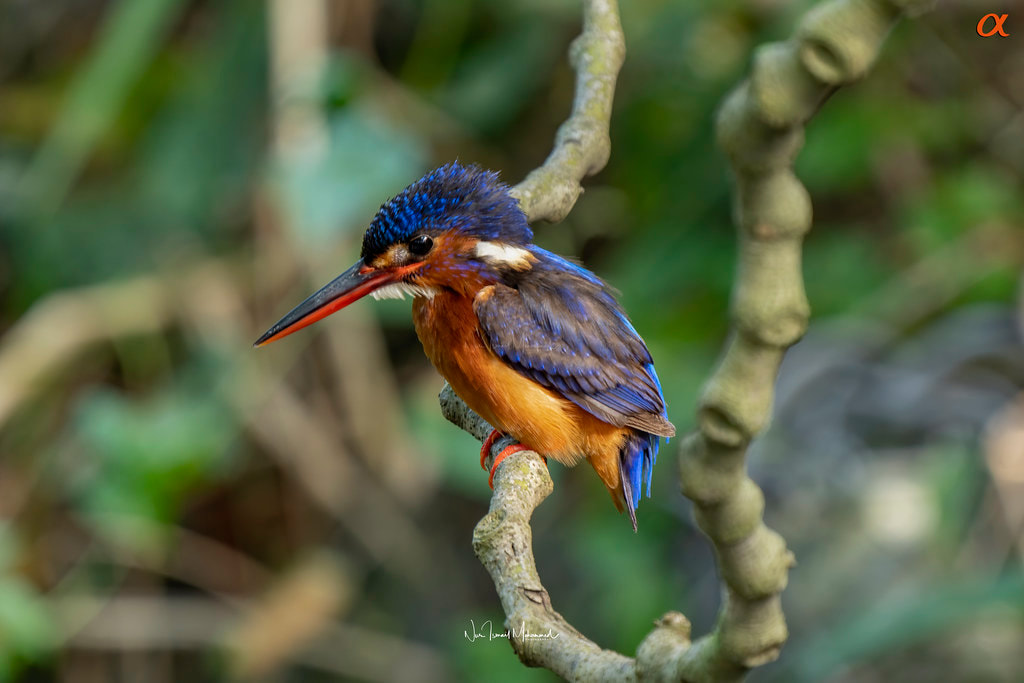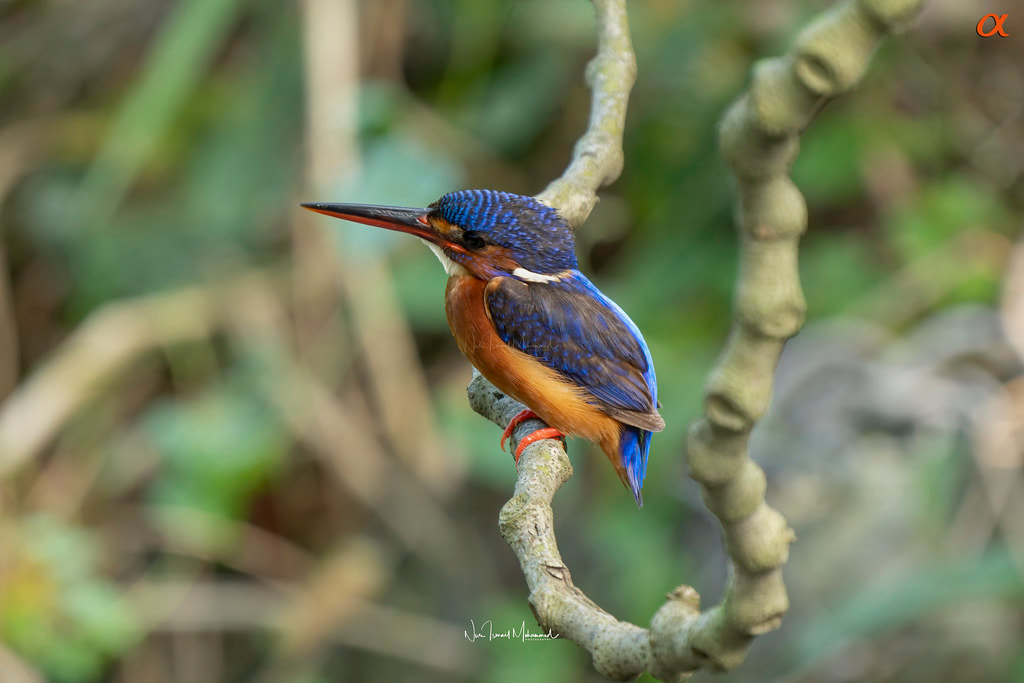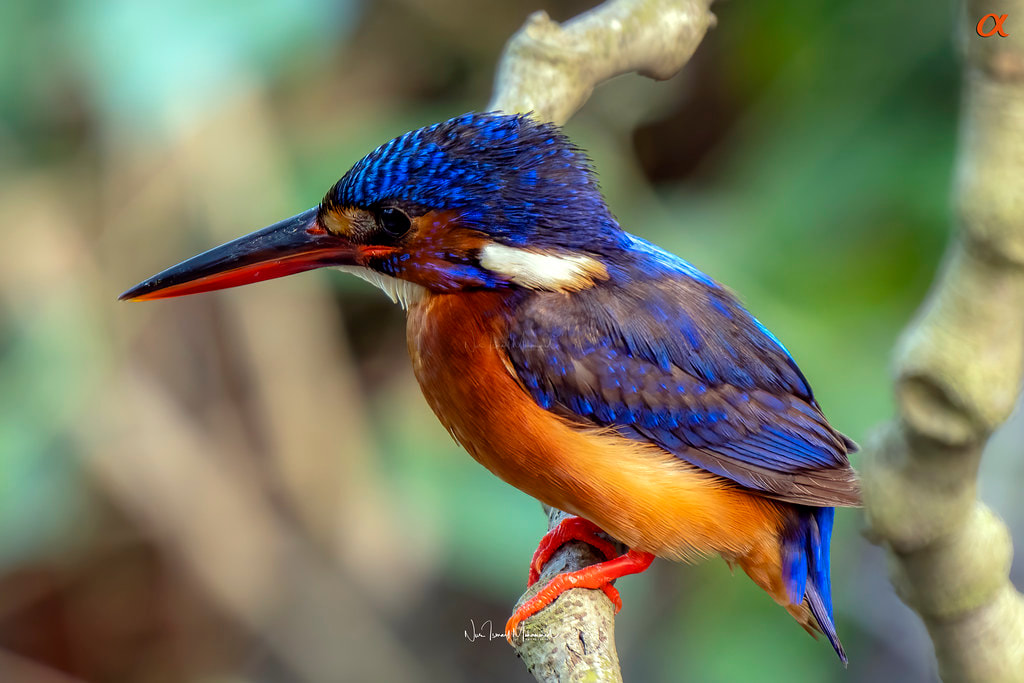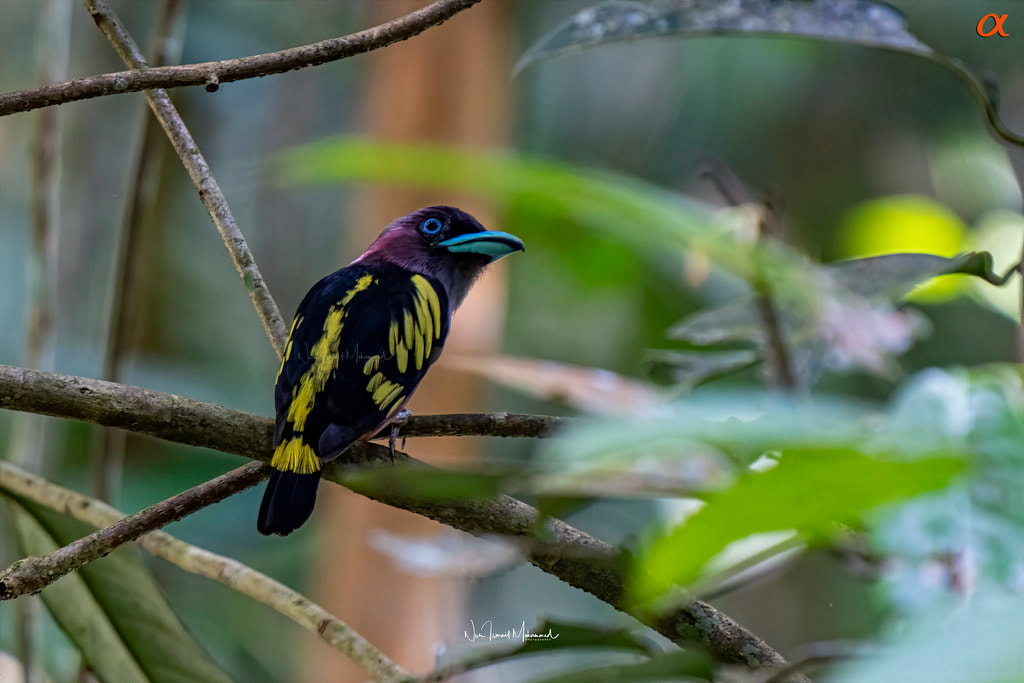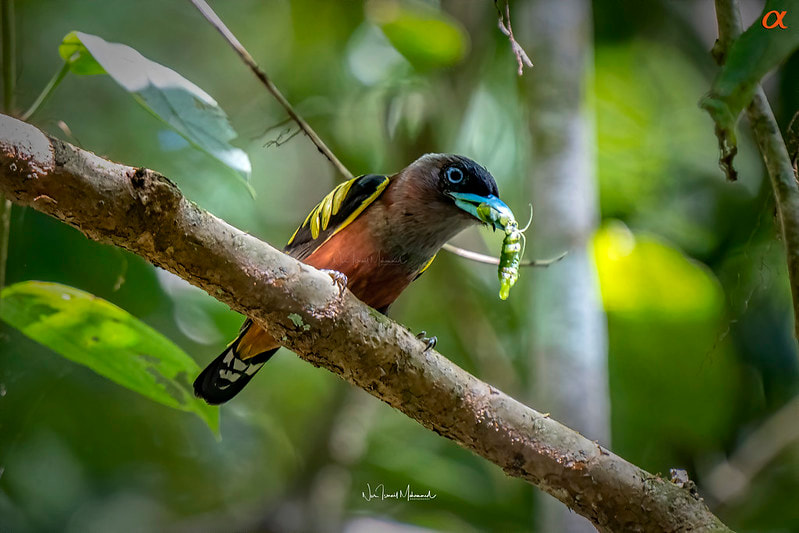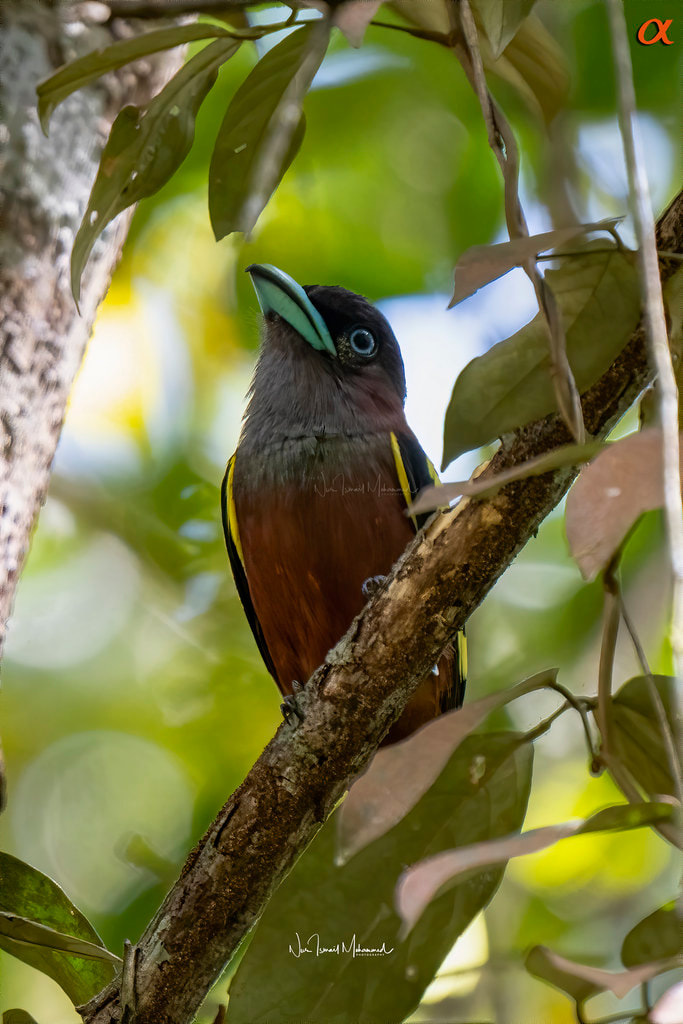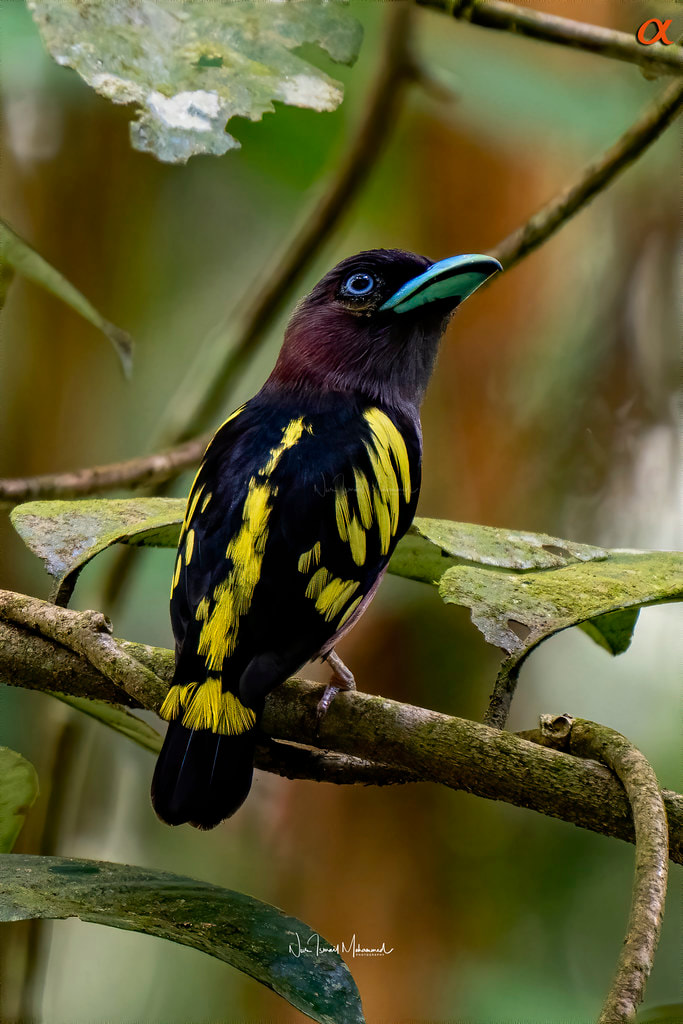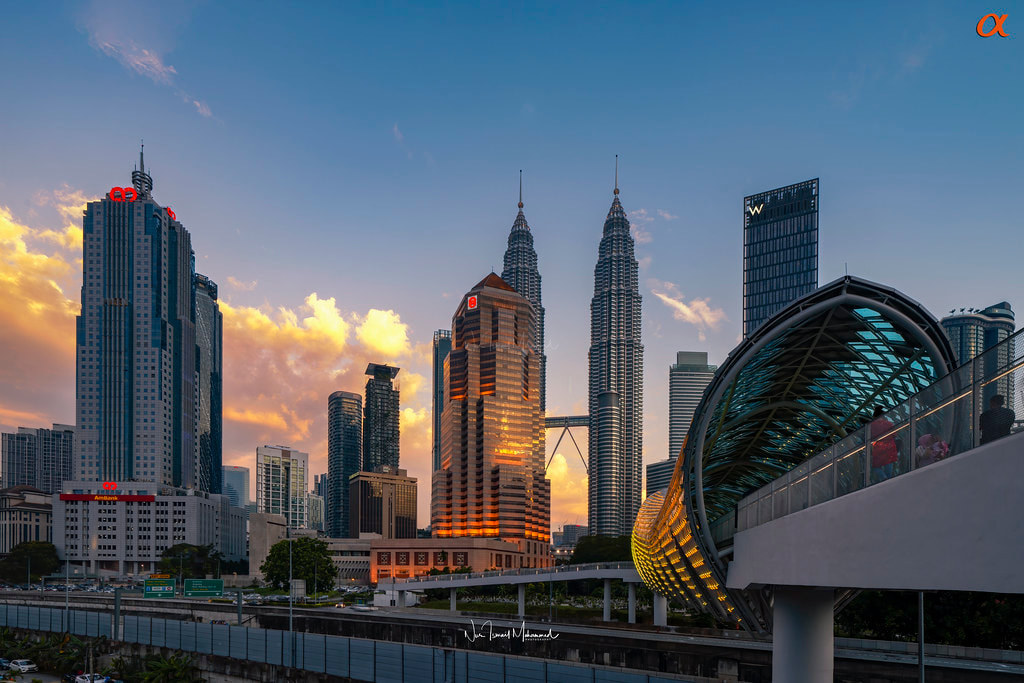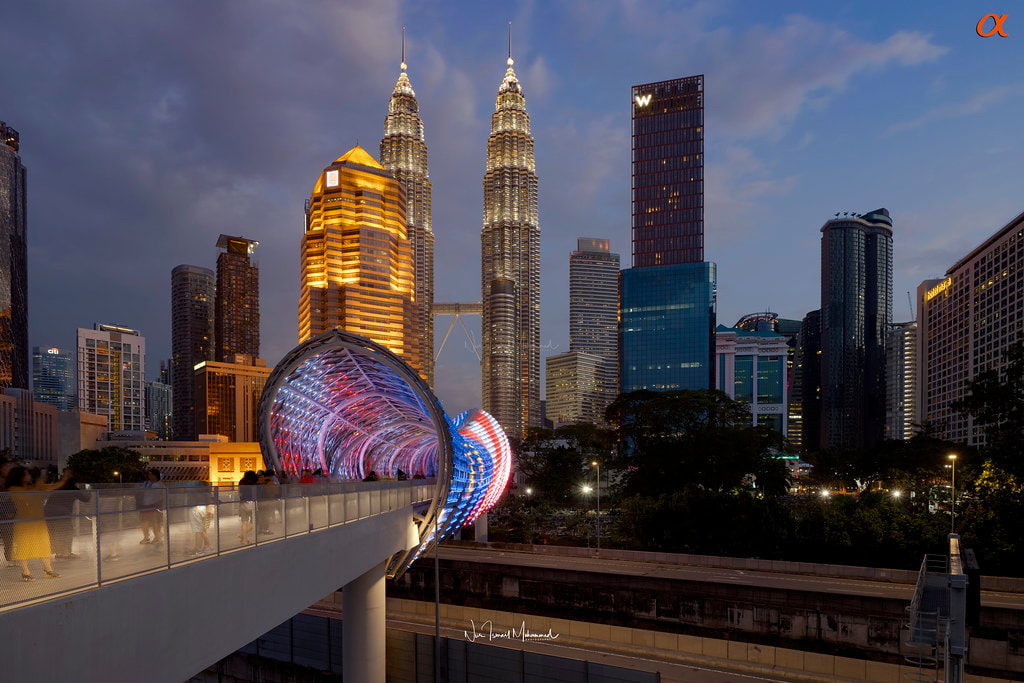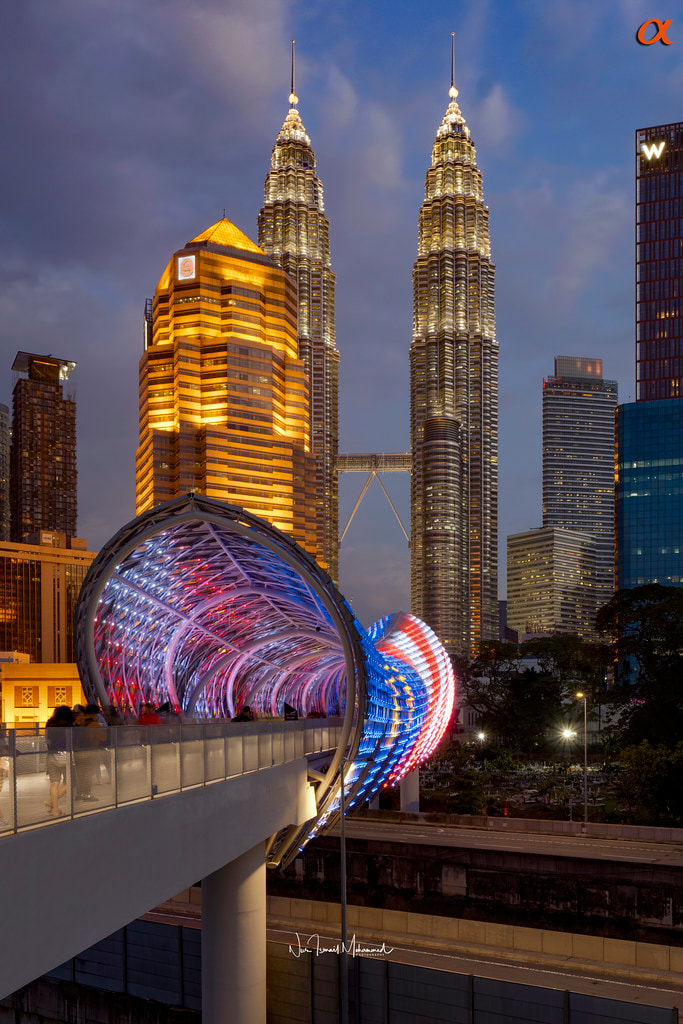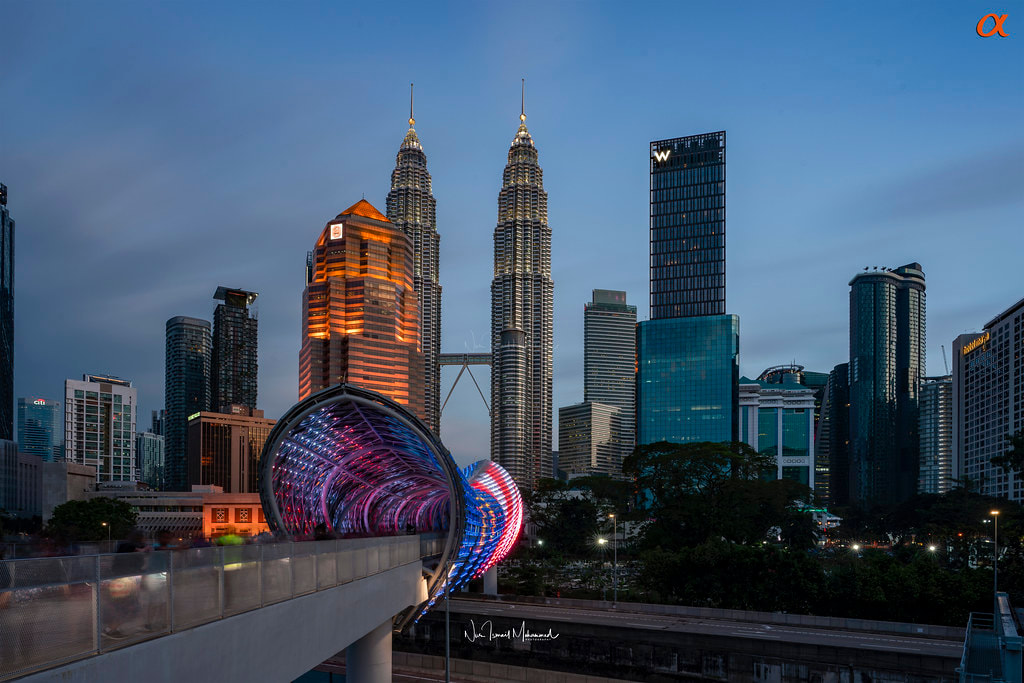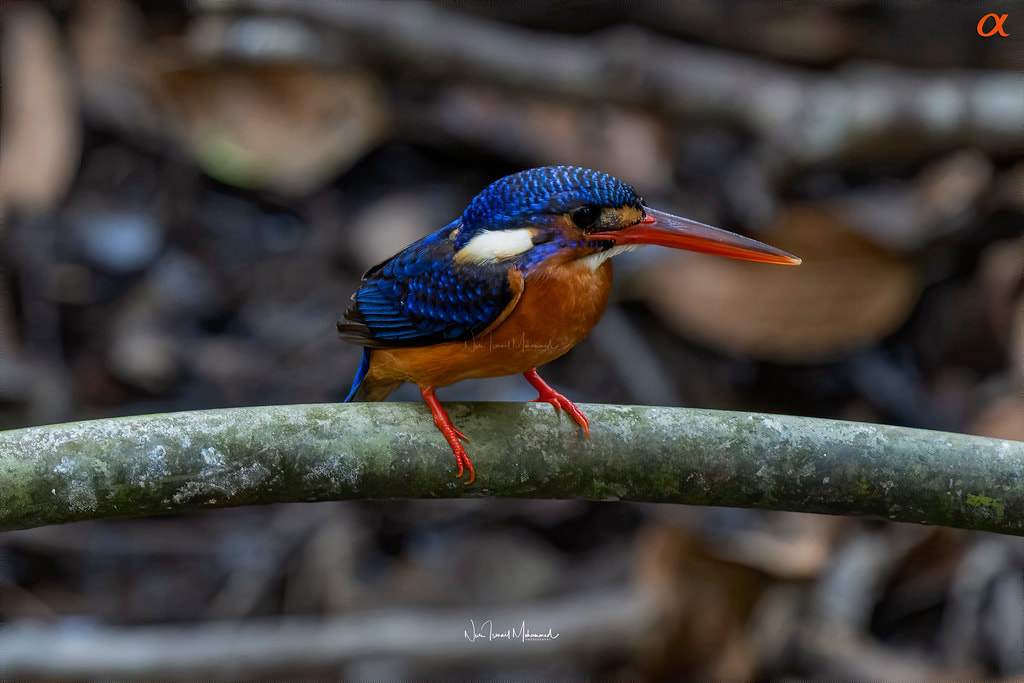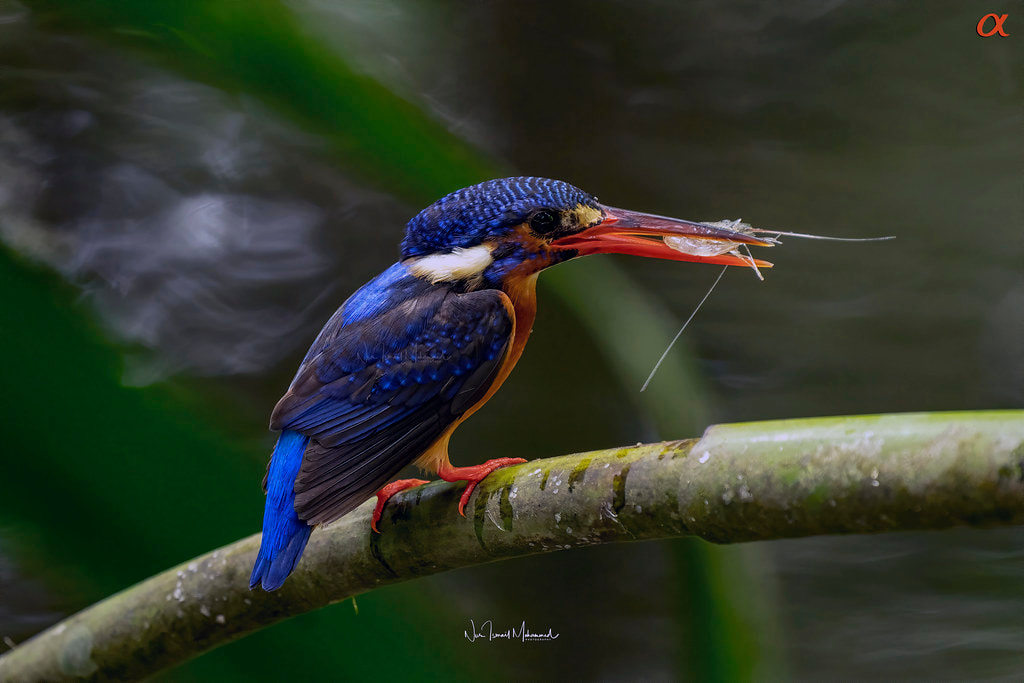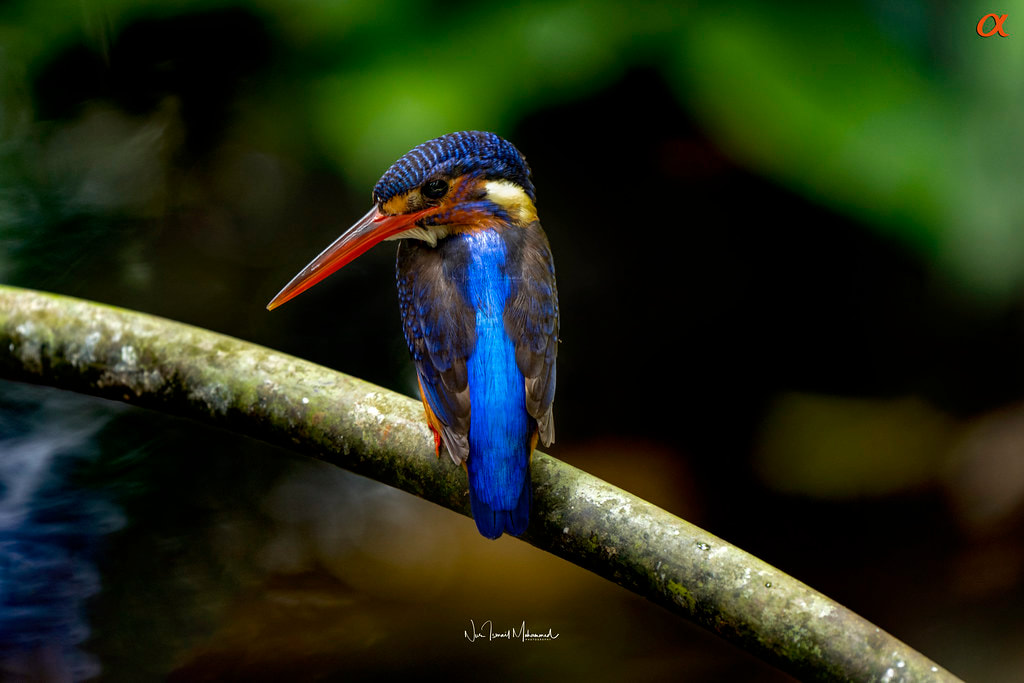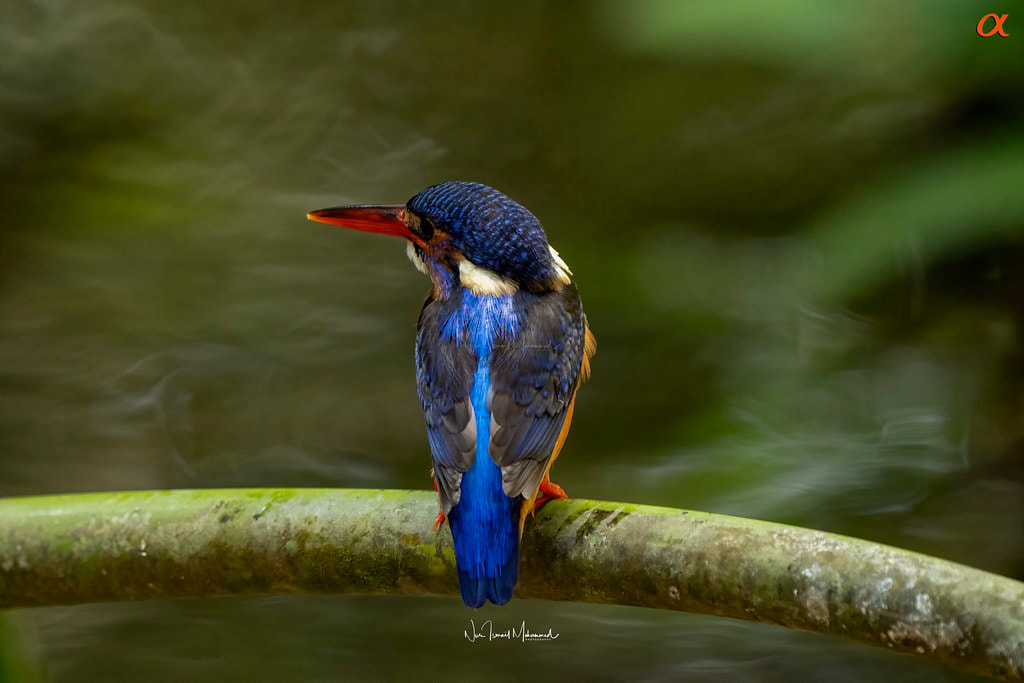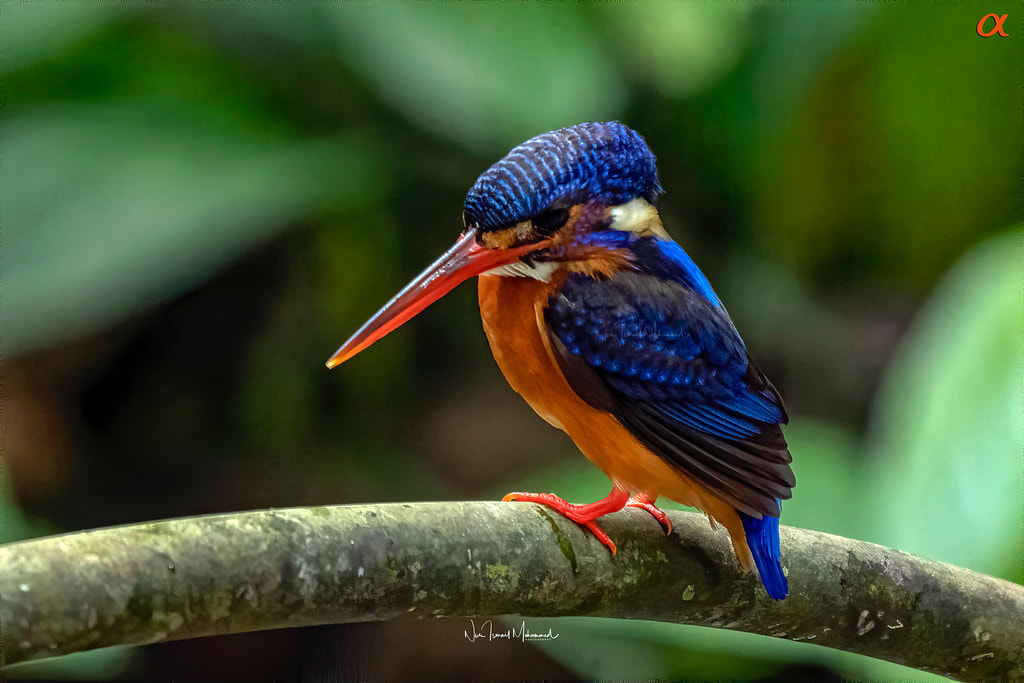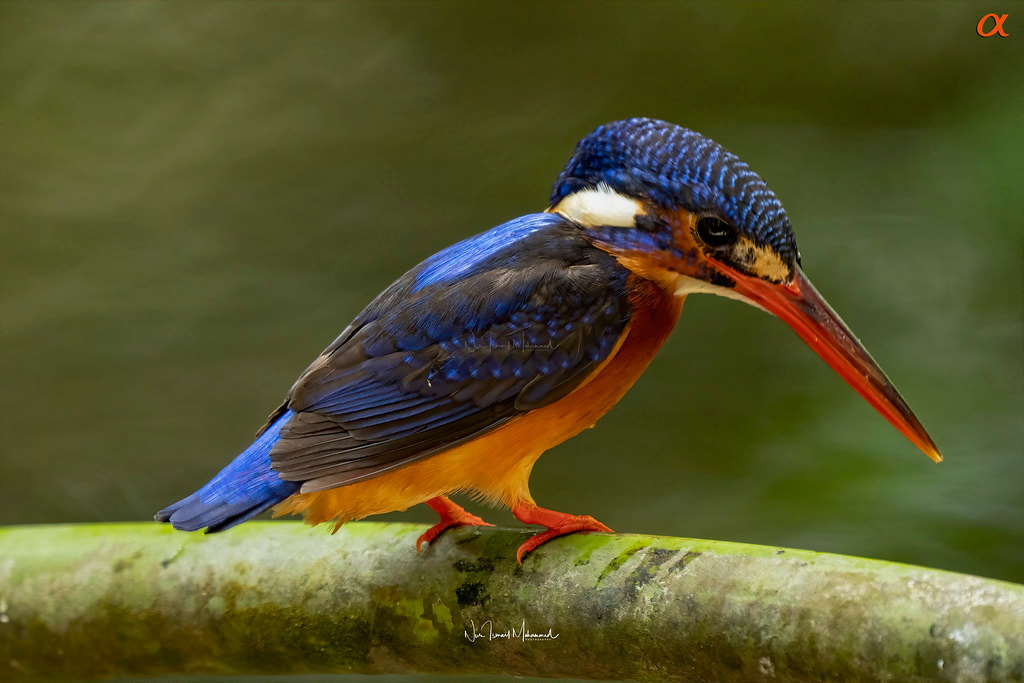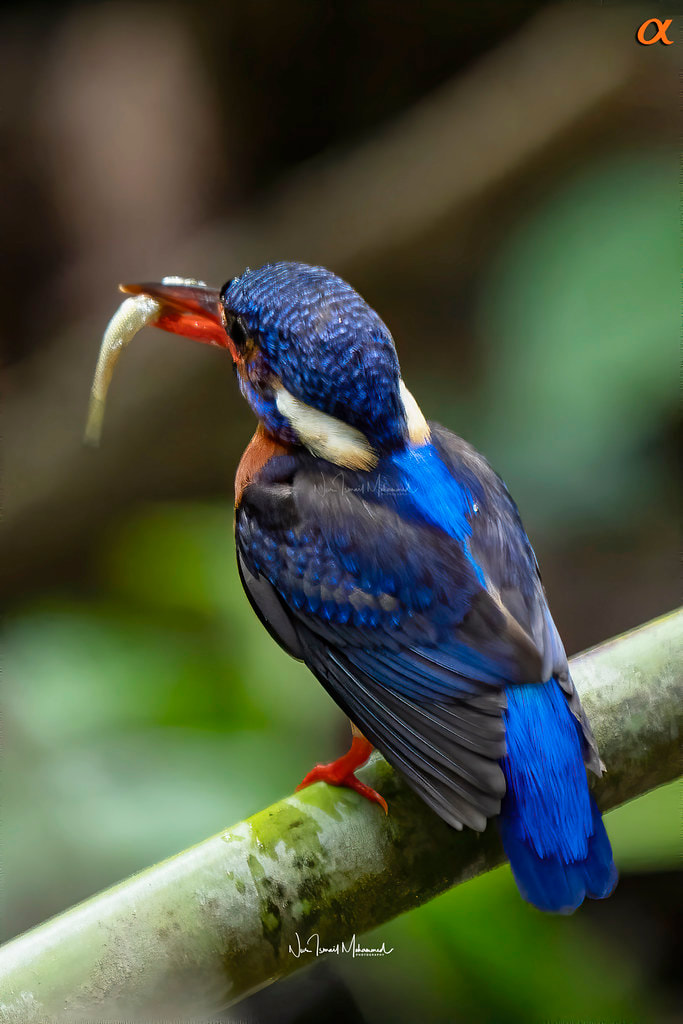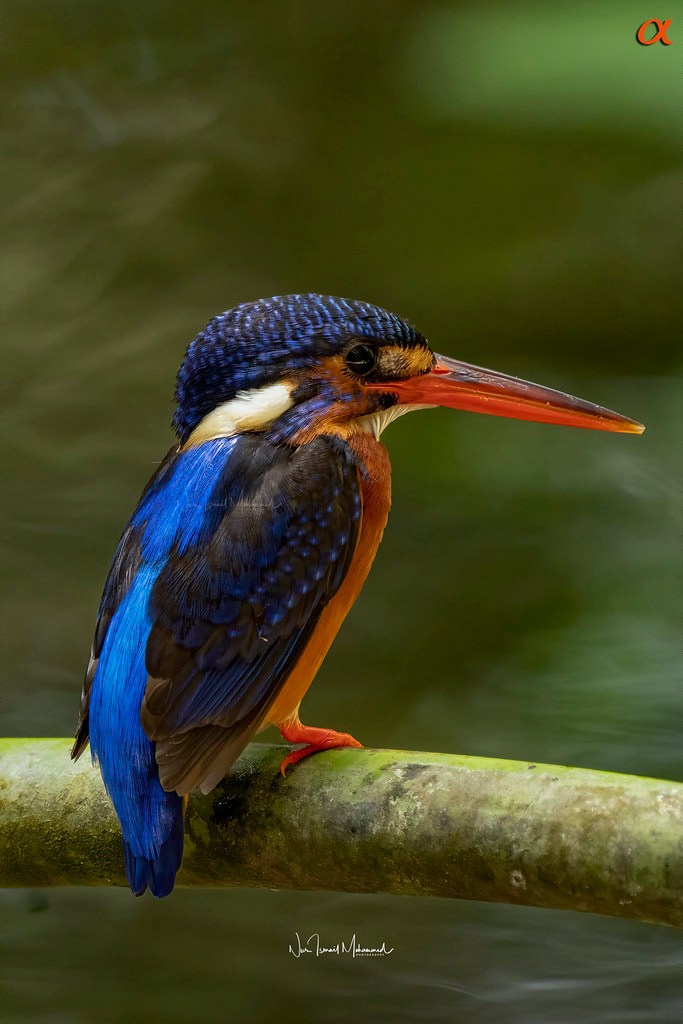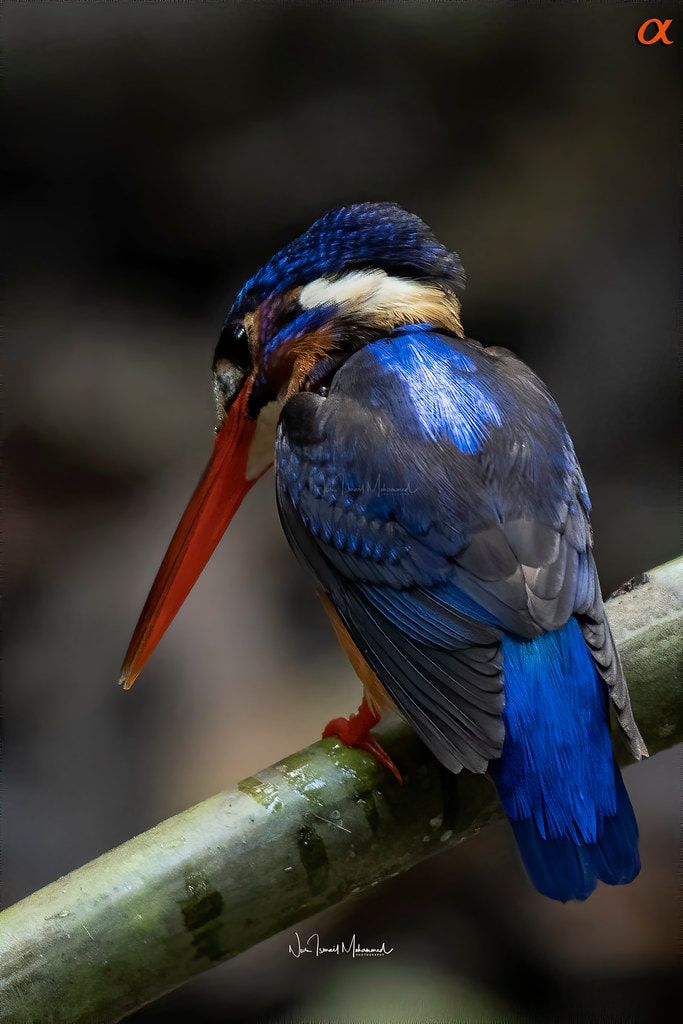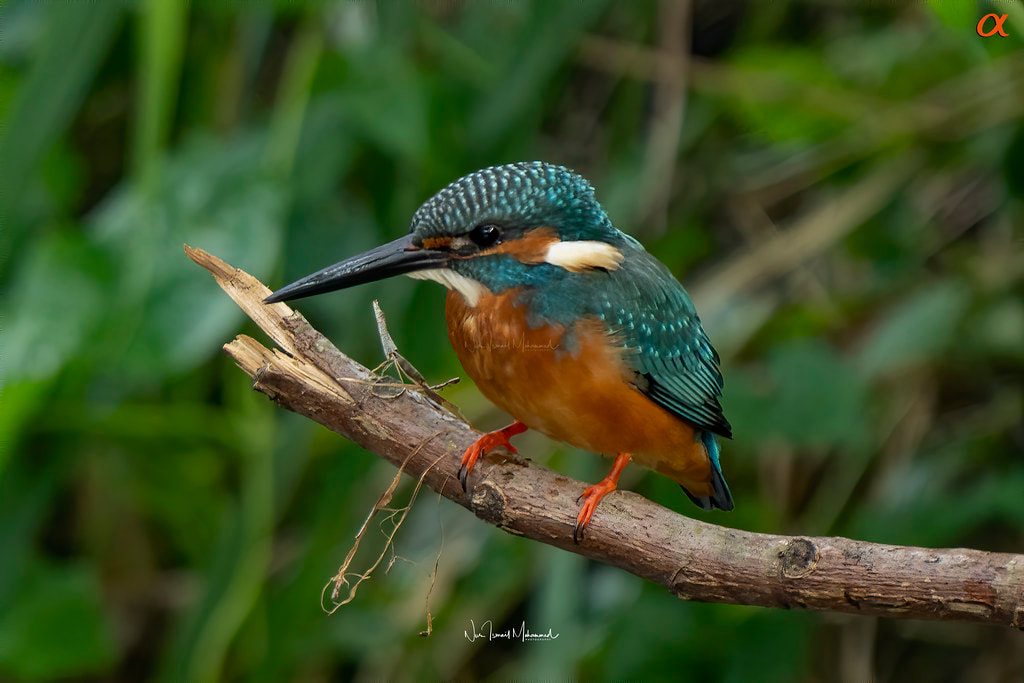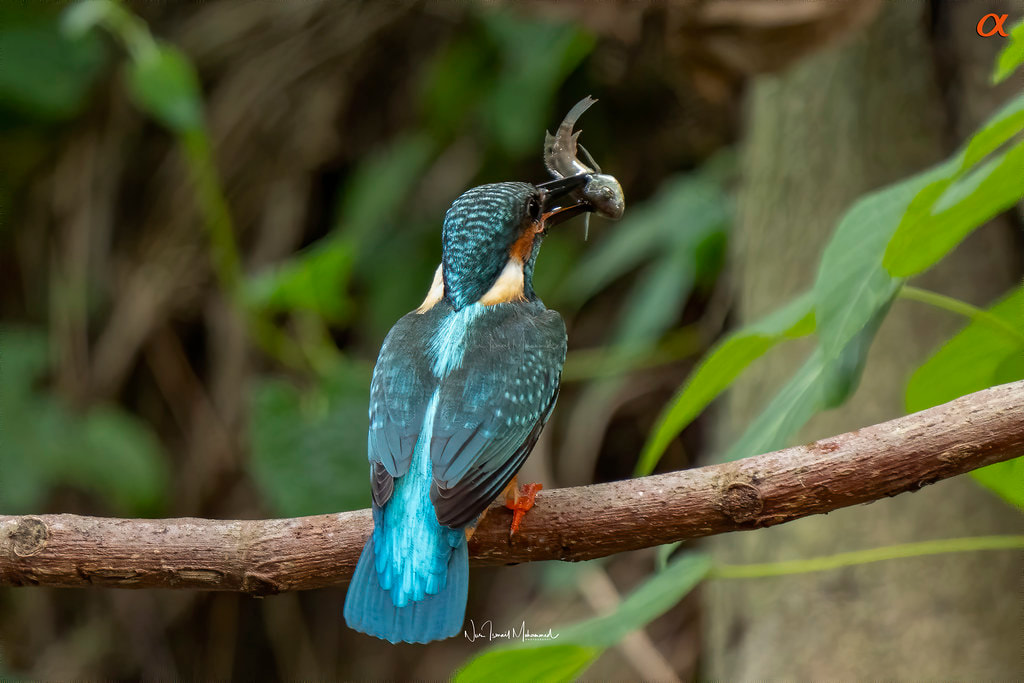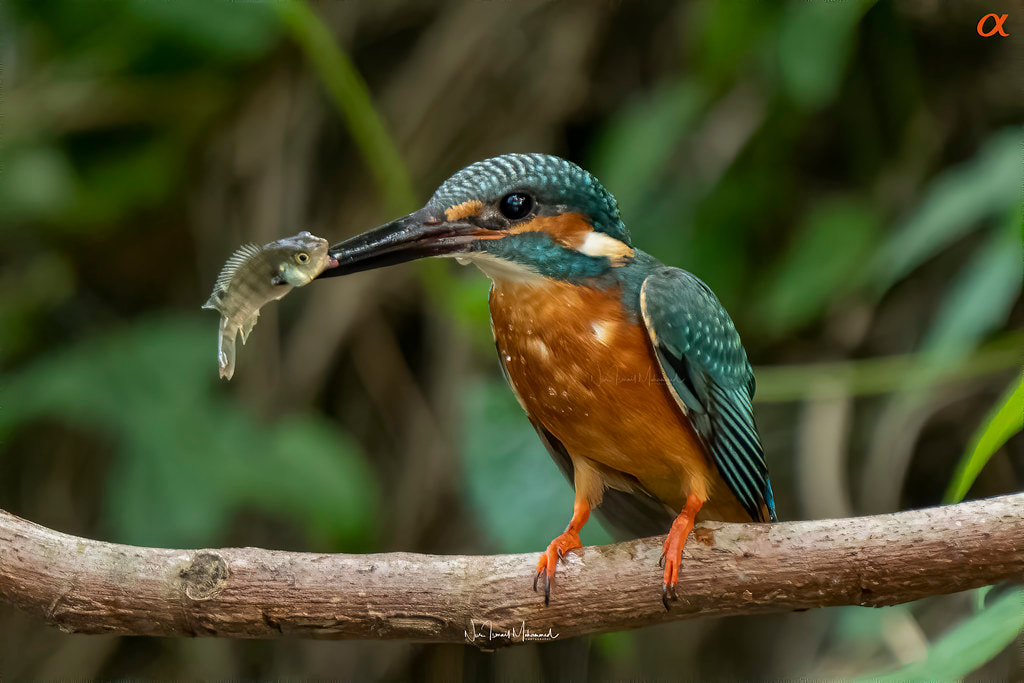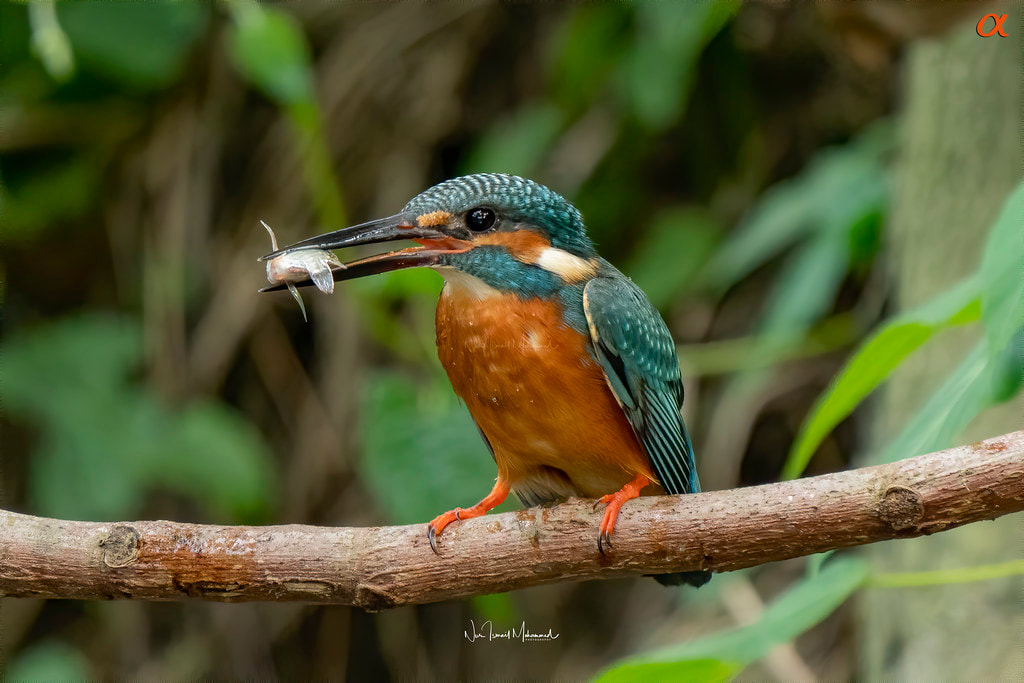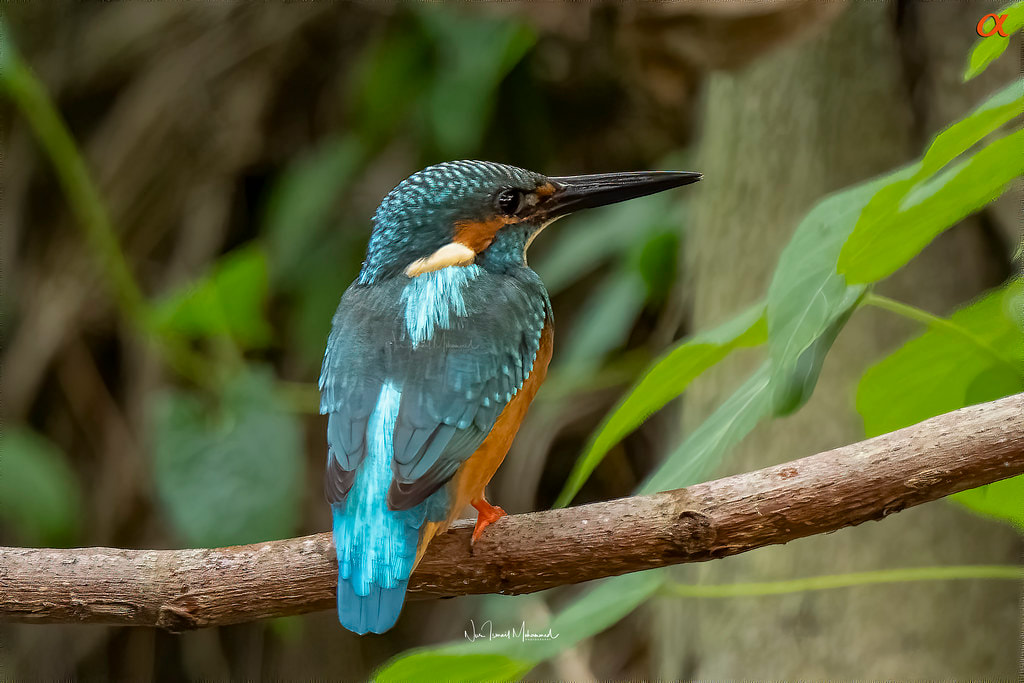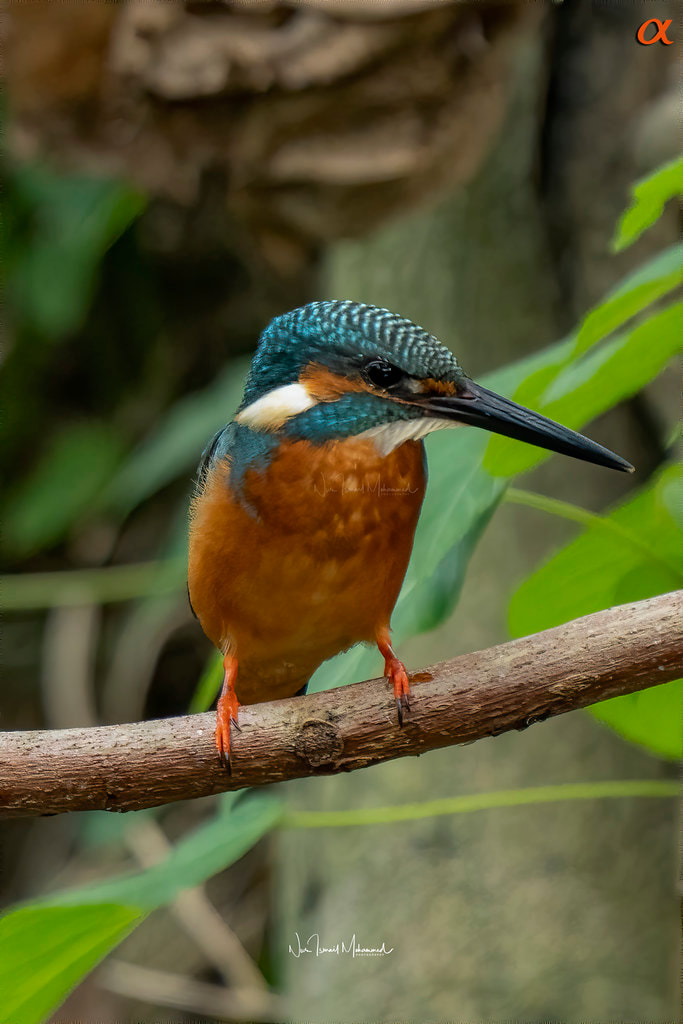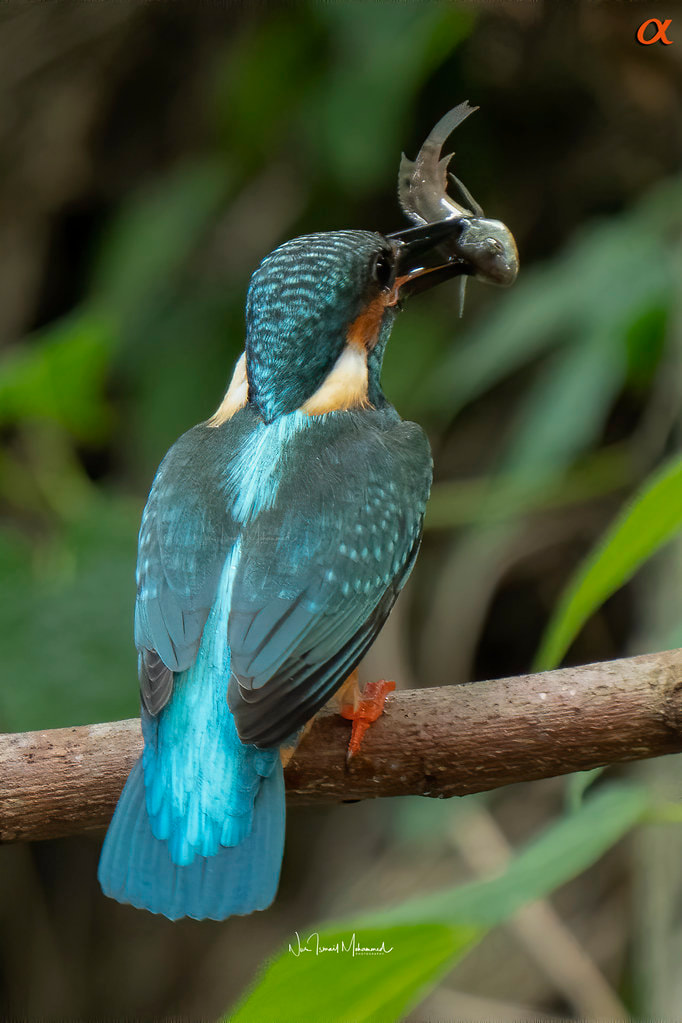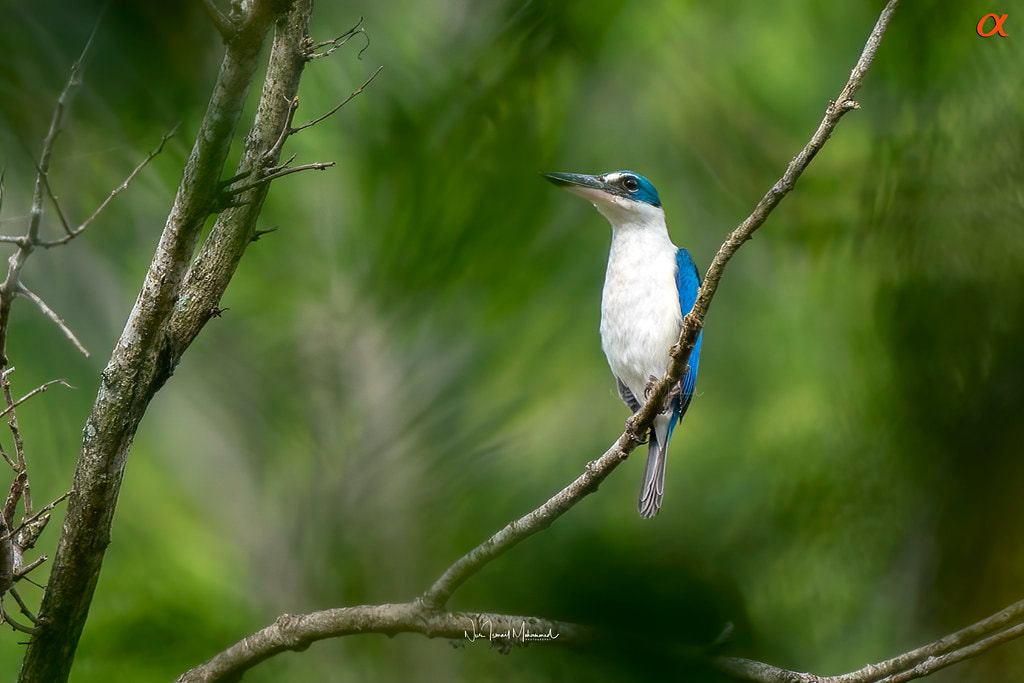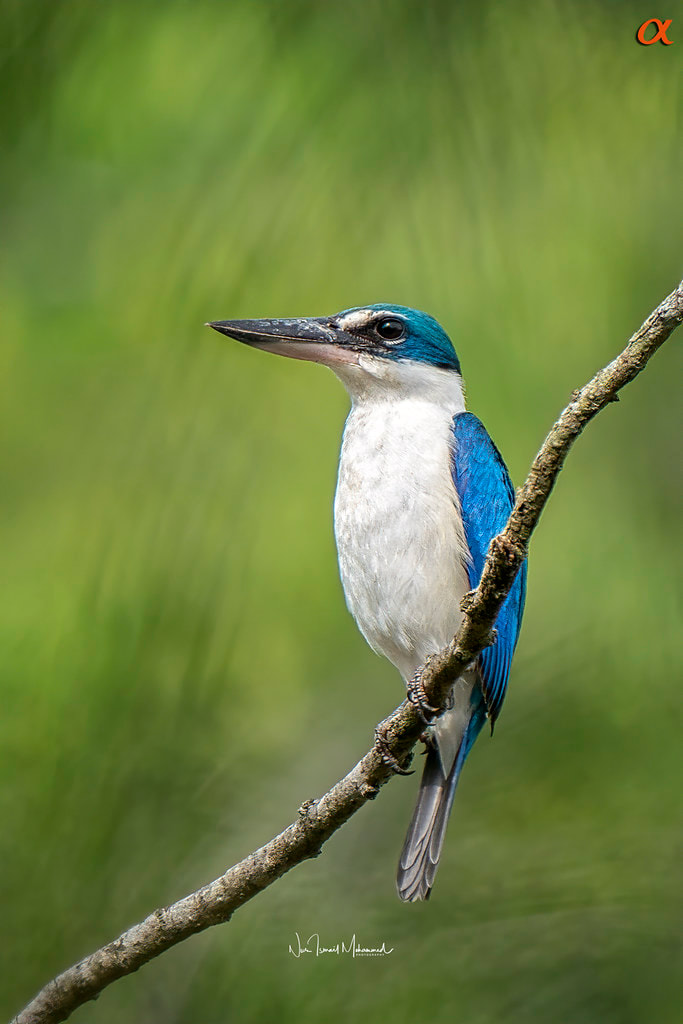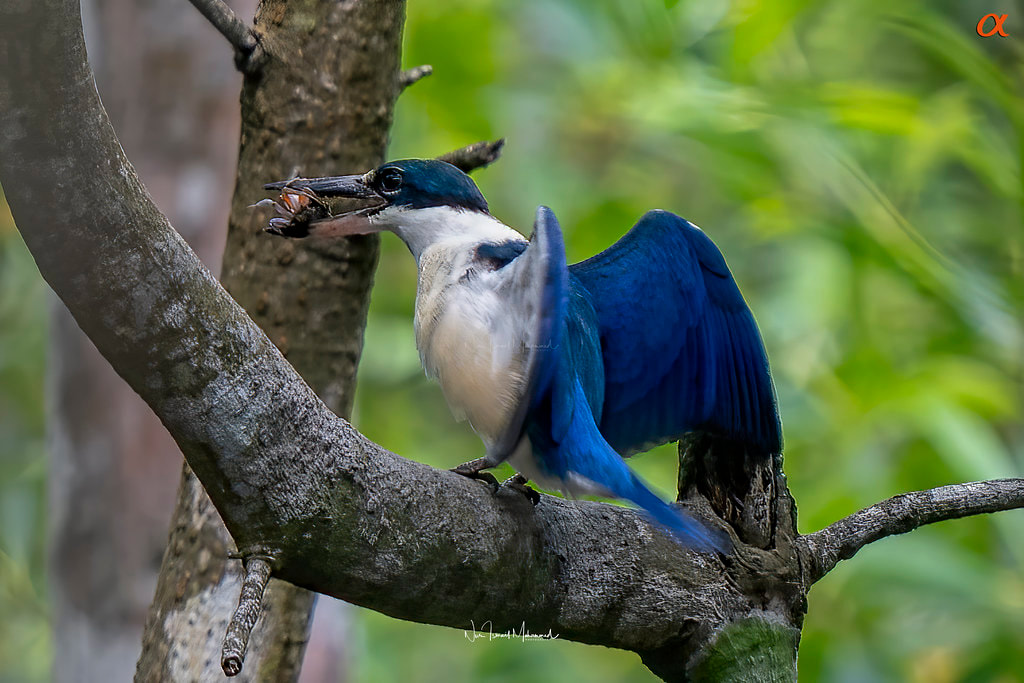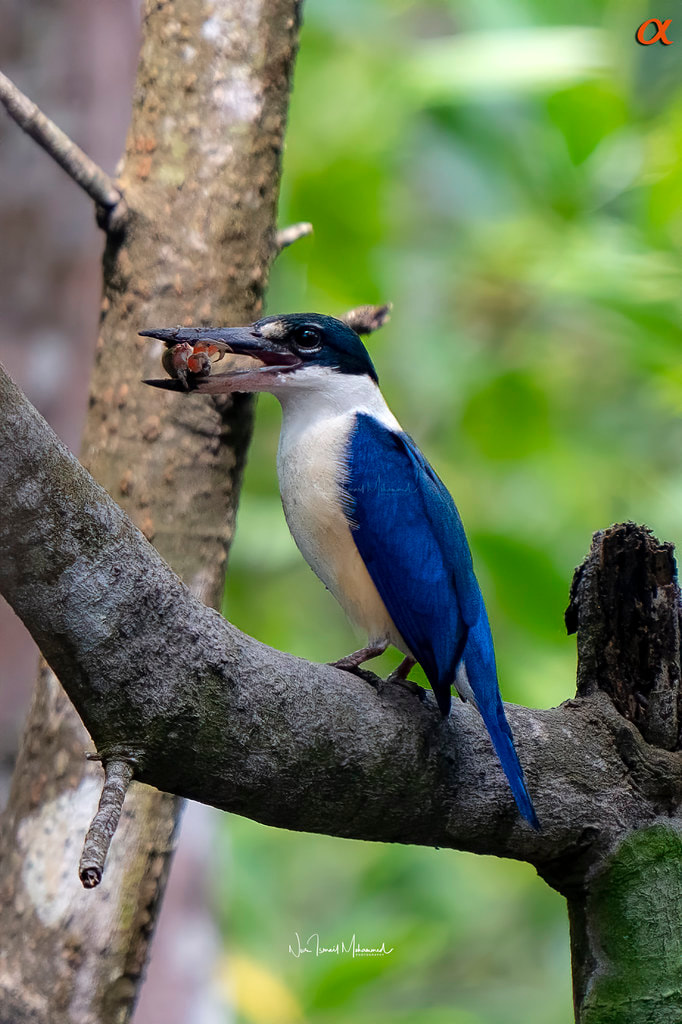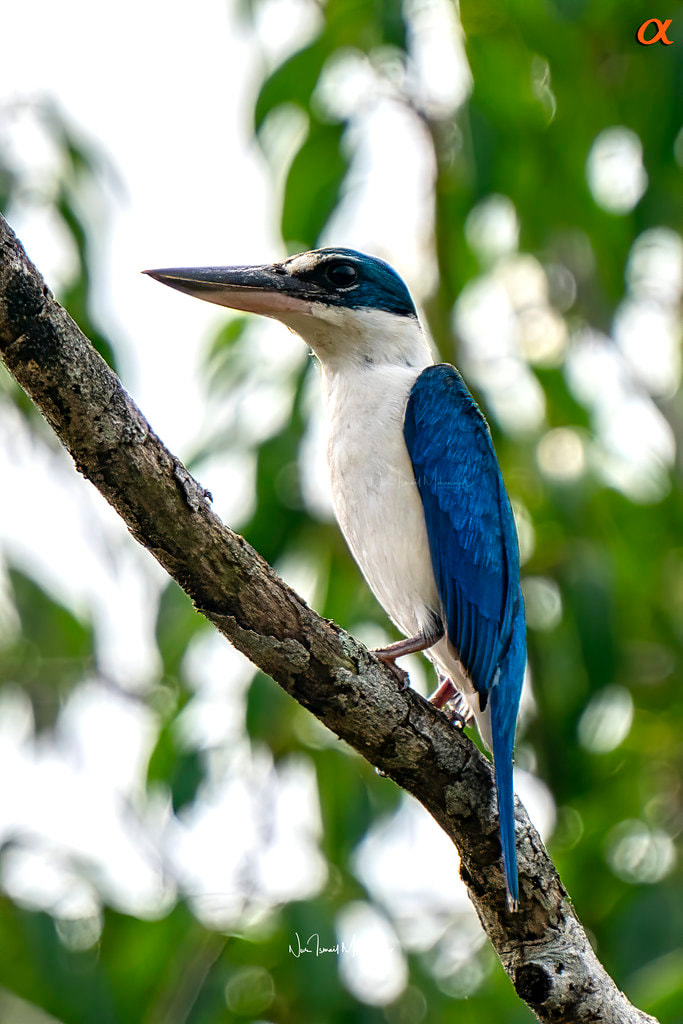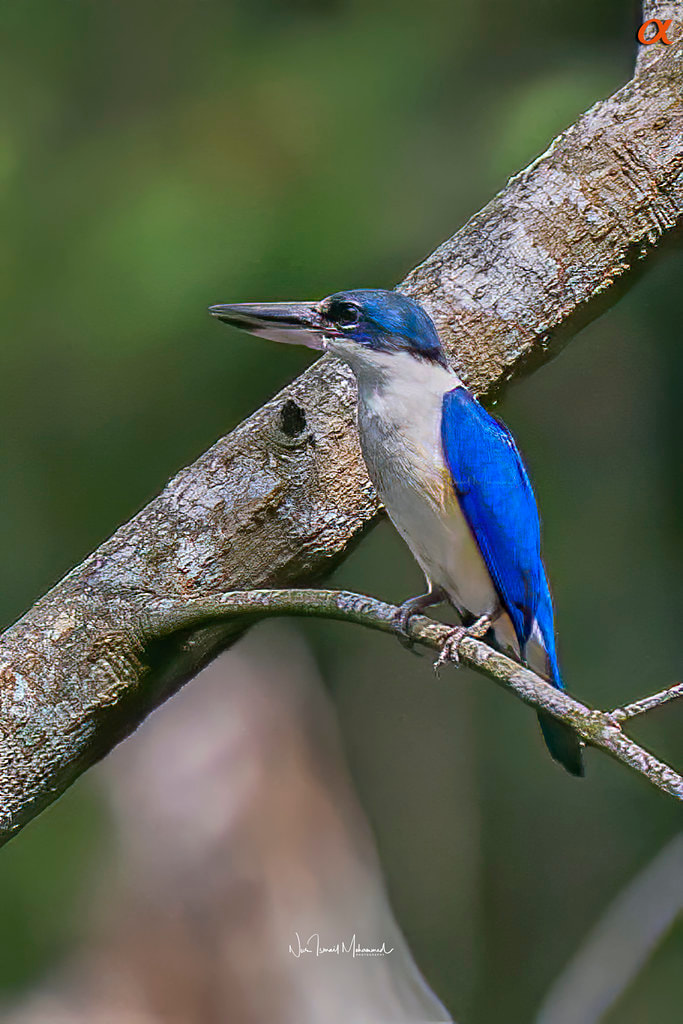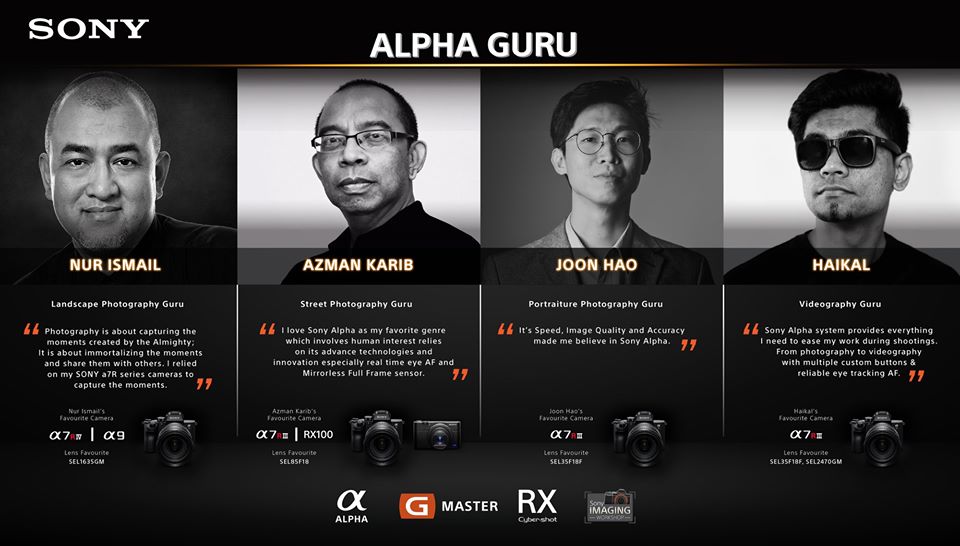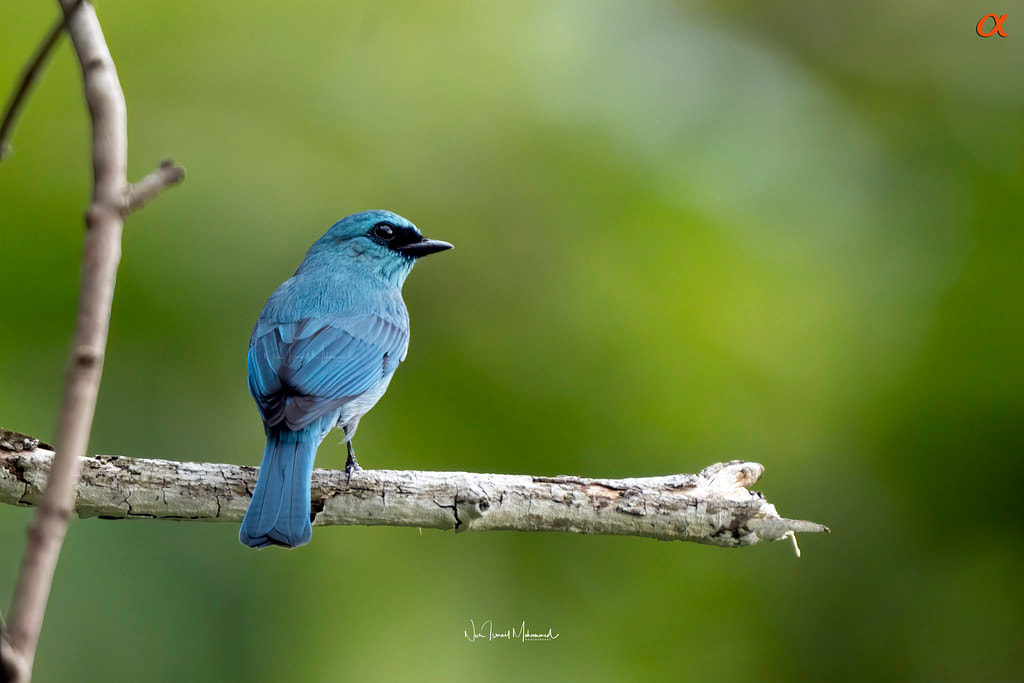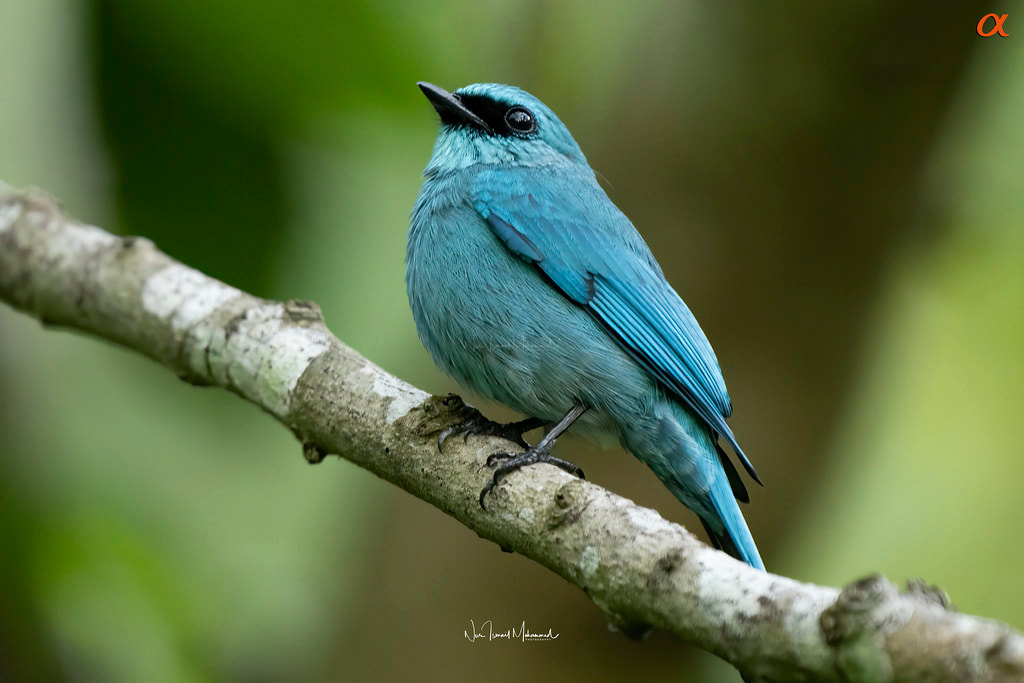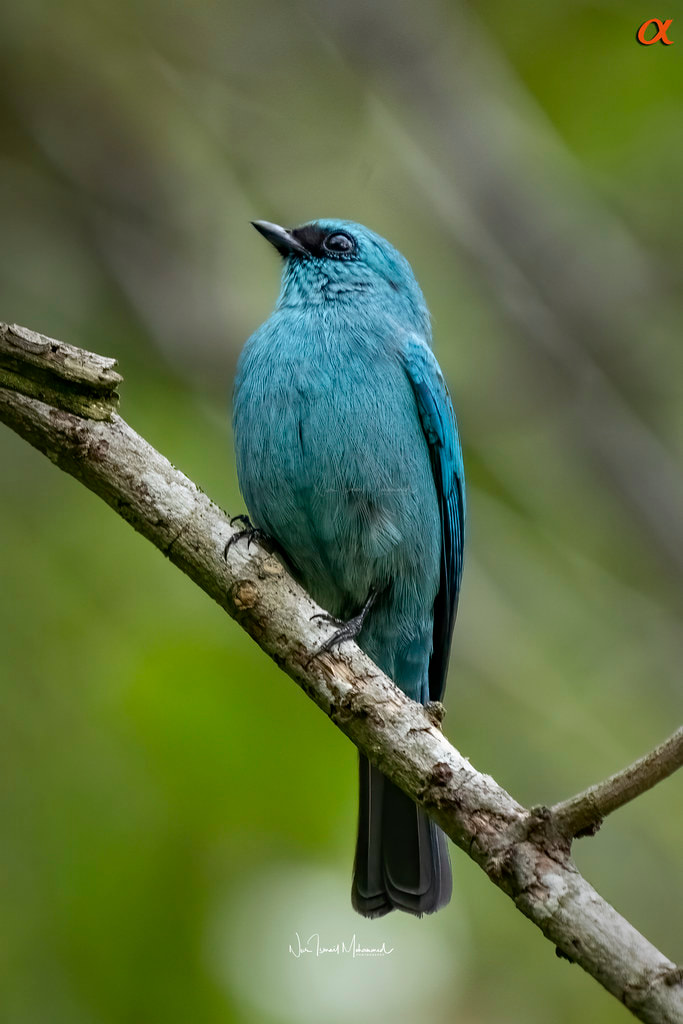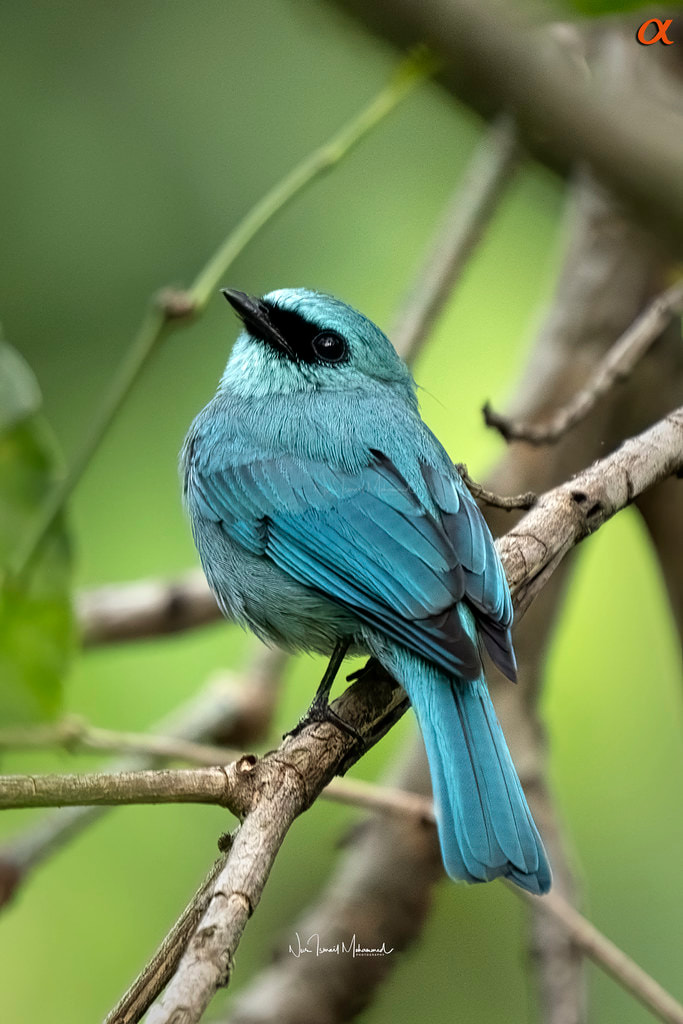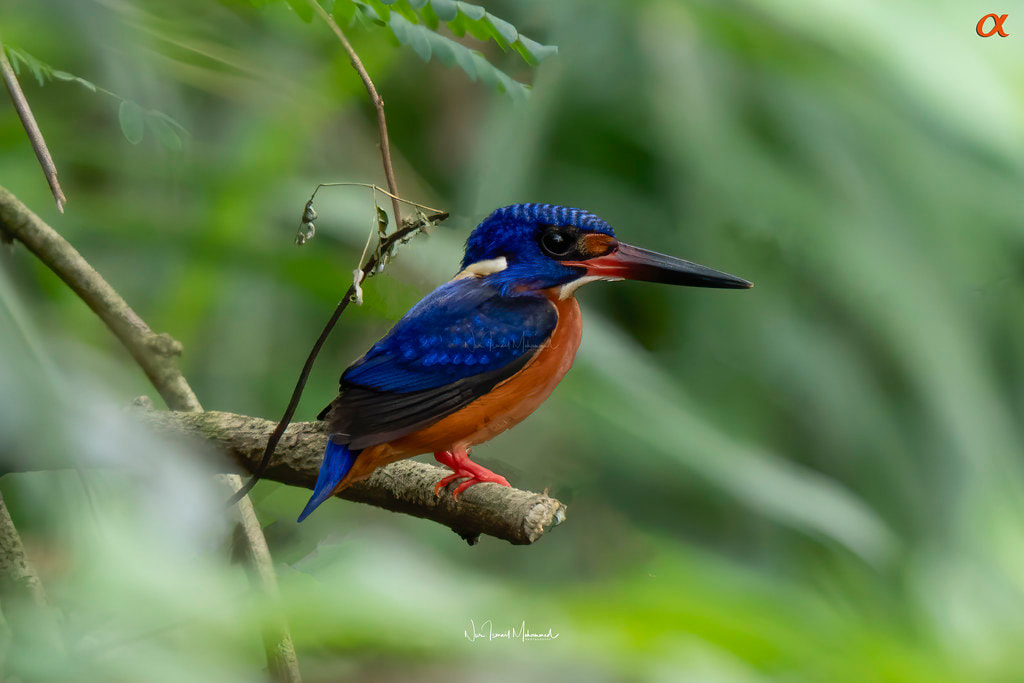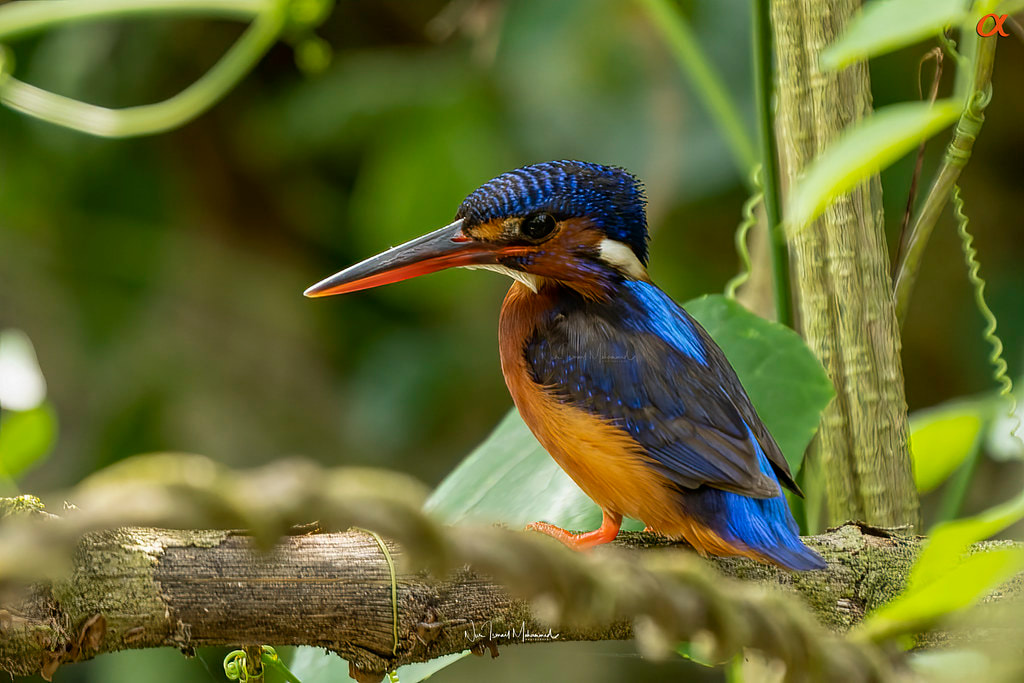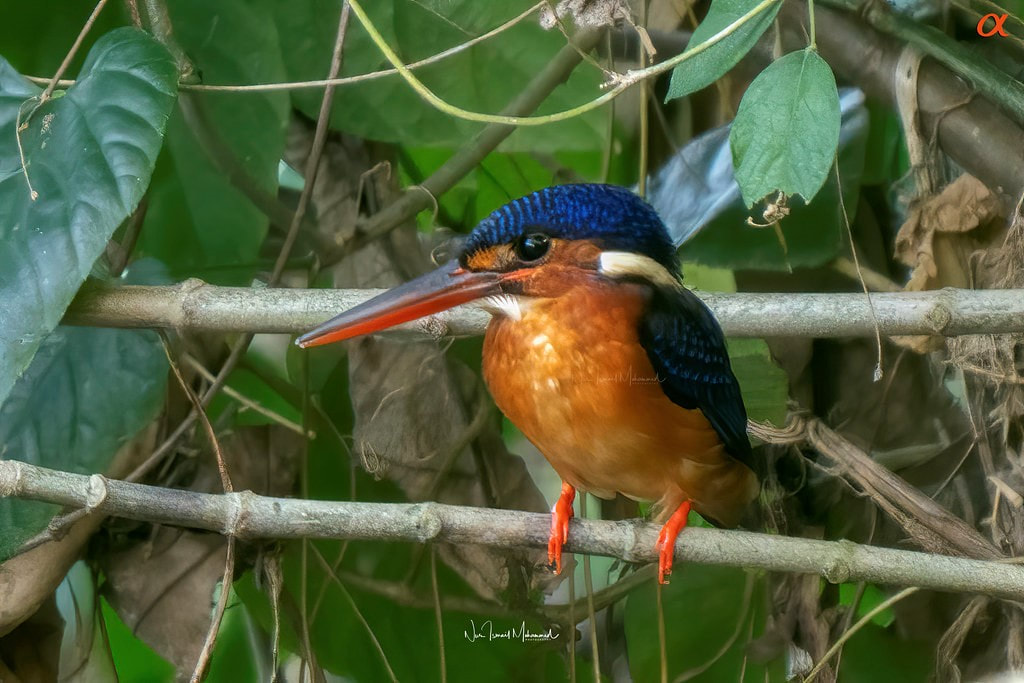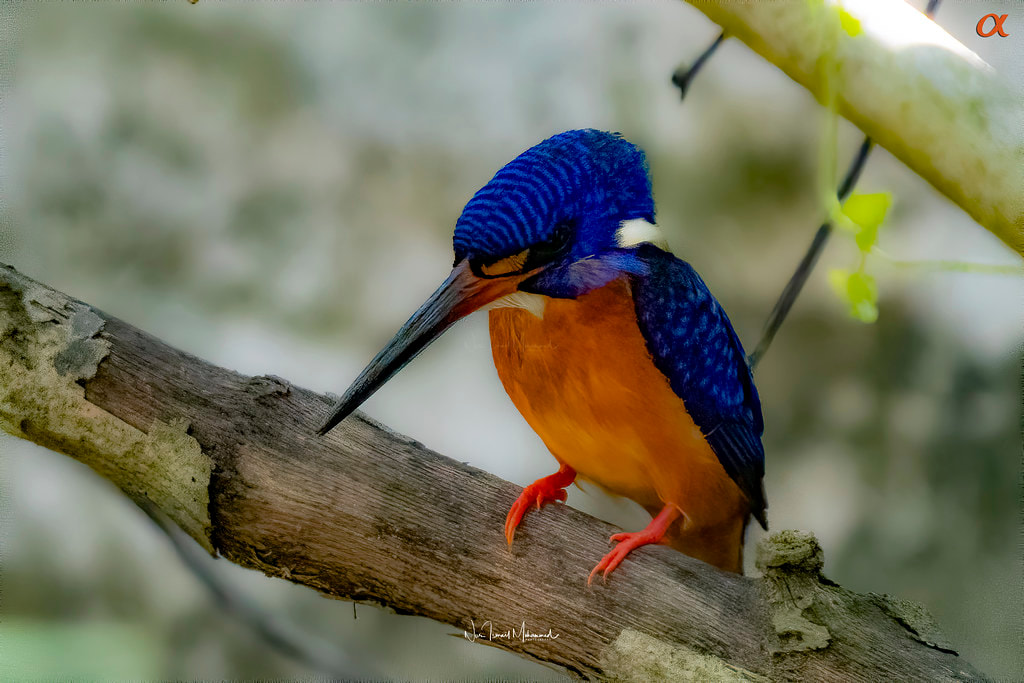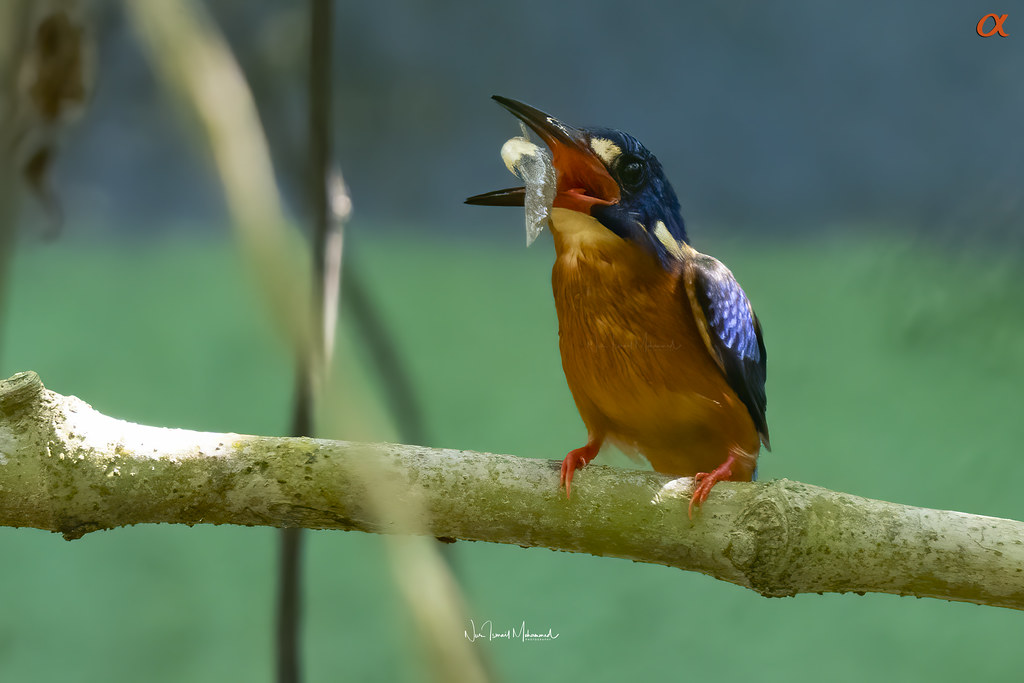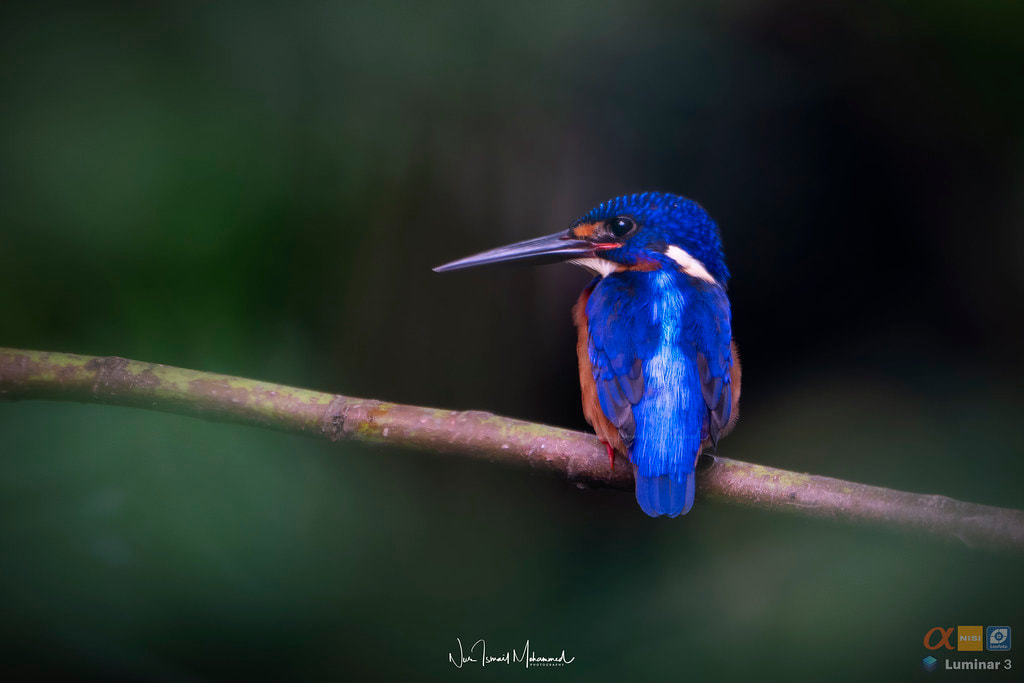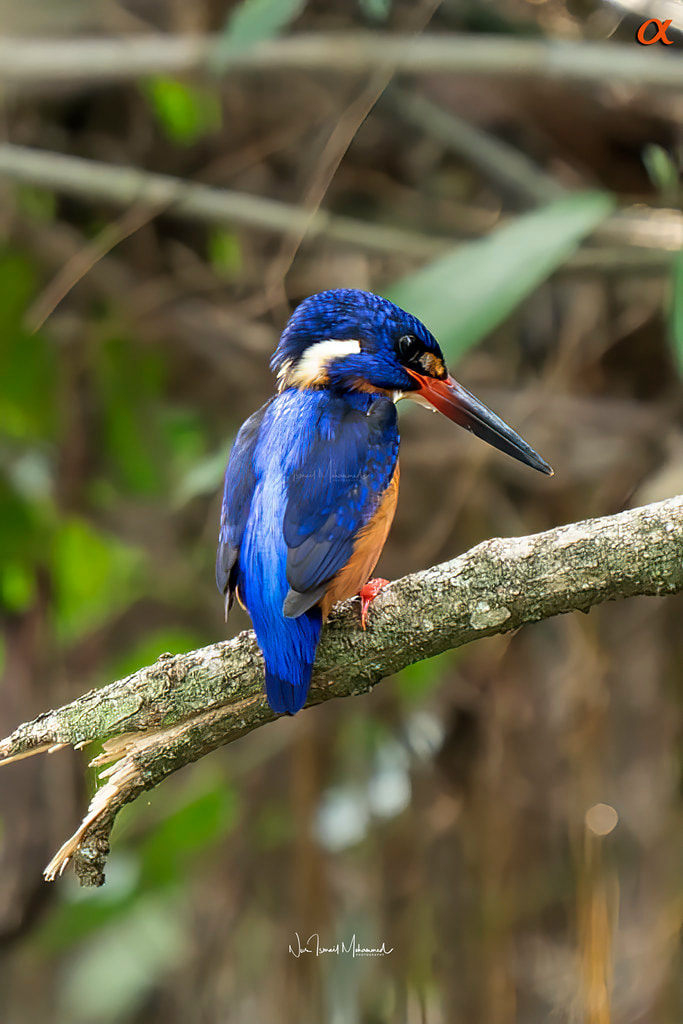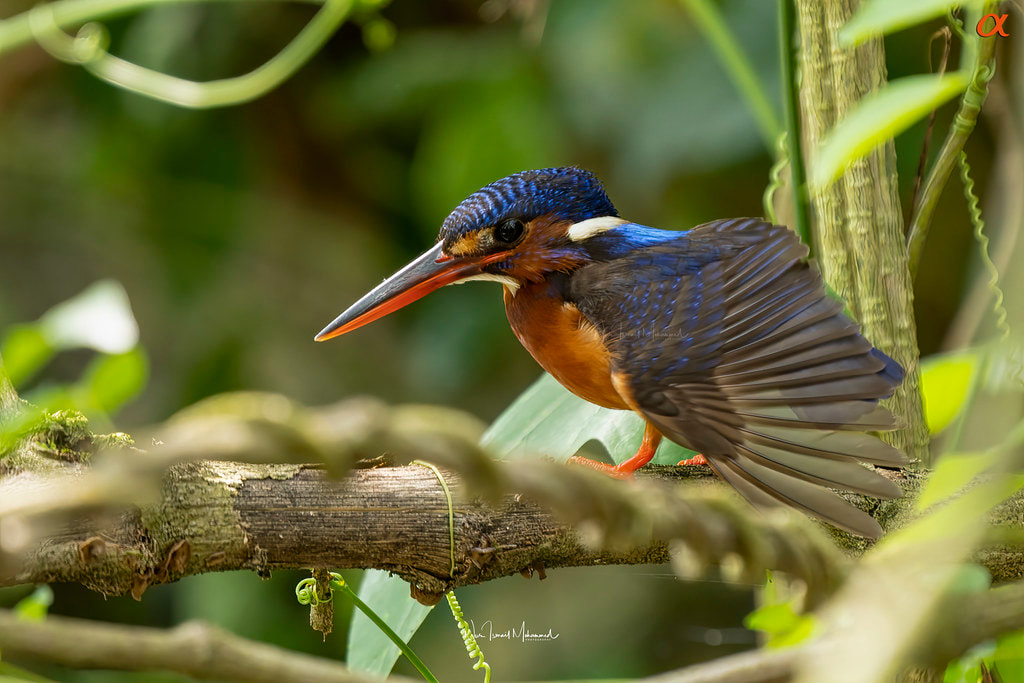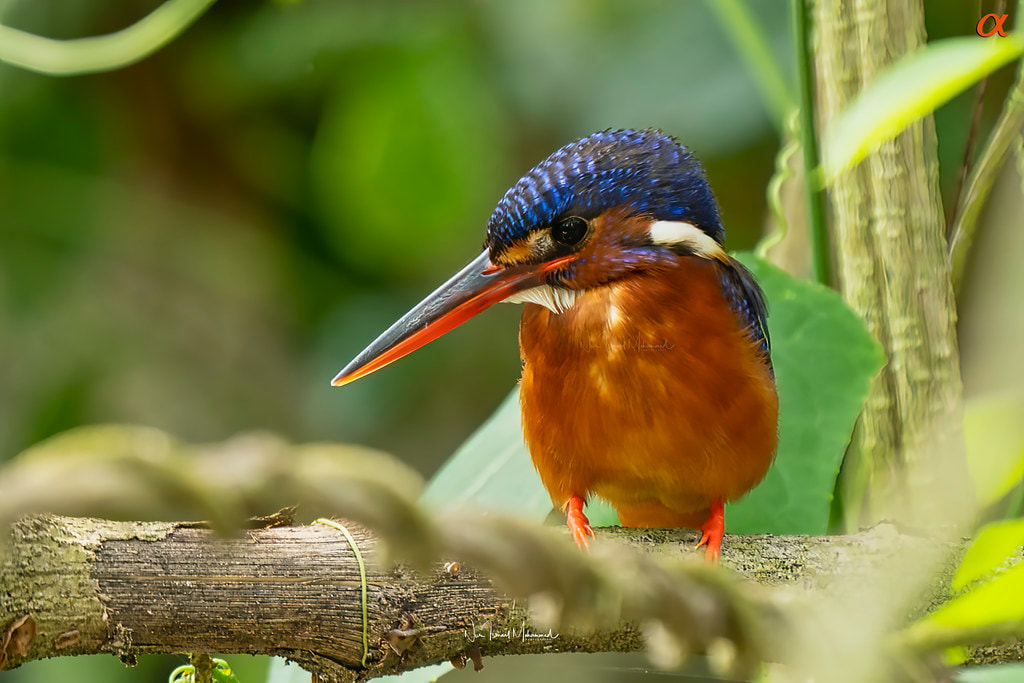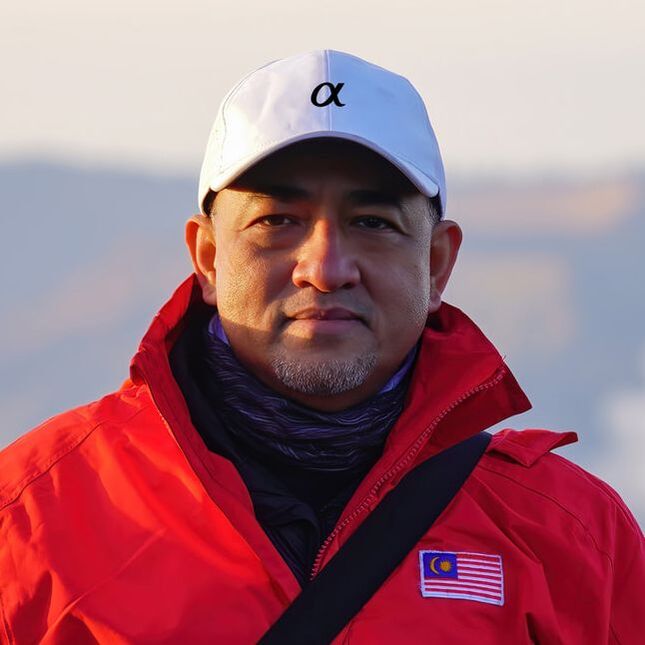|
Alcedo meninting or Blue-ear Kingfisher is a small bird that resembles the Common Kingfisher but has a much deeper blue plumage and blue ear coverts. It can be found in lowland forest up to 900 m above sea level. The main habitat requirements for kingfishers are food and nest site availability.
They usually perch on branches overhanging densely shaded streams before diving below to capture prey that includes crustaceans, dragonfly larvae and fish. The adult female for Blue-ear Kingfisher is similar to the male but tend to have more rufous orange on the sides of the head and have a red lower mandible. Still, the brilliant iridescent blue line down back to its rump is best seen in flight. This bird has been listed as Least Concern under the IUCN Red List (Version 3.1, 2016).
0 Comments
Had a short outing with my son to Hulu Langat last Sunday and managed to capture the elusive banded broadbill (Eurylaimus javanicus) from a distance of about 20m. I had used my SONY a7RIV with the SEL200600G lens and SEL14TC teleconverter. Thanks for viewing! #FullFrameLife #MySONYLife #sony #sonymalaysia #a7RIV #SEL1635GM #GMaster #SEL1224G #Alpha #AlphaGuru #AlphaUniverseMY #NurIsmailPhotography #madebyluminar #skylum #skylummalaysia #luminar #topazlabs #NiSi #NiSiGlobal #NiSiMalaysia
The Saloma Link is a 68m long pedestrian bridge between Lorong Raja Muda Musa 3 and Lorong Saloma across AKLEH Highway. The bridge architectural concept would resemble “Sirih Junjung” (betel nut leaf arrangement) which reflected the Malay culture. The bridge was designed by Veritas Architects Sdn Bhd, based in Kuala Lumpur and the construction was completed in early 2020. With the completion of the bridge, pedestrians can walk from Kampung Baru to KLCC is about 15 minutes. Getting to Saloma Link is quite easy. Best way to get there with the Rapid KL LRT and get off at Kampung Baru Station. Saloma Link is just next door to the station, on the left. No need to worry about parking. But, if you choose to drive, you can park your car along the road outside of the station (not legal) (GPS: 3.161190, 101.707501), if you can find a spot. Alternatively, you can park at the open carpark behind Menara Public Bank (GPS: 3.160821, 101.709582) from Jalan Ampang and walk across the bridge over Klang River. You can be sure that there will be plenty of people there, so, better be early if you're planning to shoot the sunset there. I had used two setups here. I've used the SONY a7RIV camera and the SEL1635GM as well as SEL1224G lenses for the still shots, while for my timelapse, I used the SONY a9 camera with the SEL1224G. #FullFrameLife #MySONYLife #sony #sonymalaysia #a7RIV #SEL1635GM #GMaster #SEL1224G #Alpha #AlphaGuru #AlphaUniverseMY #NurIsmailPhotography #madebyluminar #skylum #skylummalaysia #luminar #topazlabs #NiSi #NiSiGlobal #NiSiMalaysia
Alcedo meninting or Blue-ear Kingfisher is a small bird that resembles the Common Kingfisher but has a much deeper blue plumage and blue ear coverts. It can be found in lowland forest up to 900 m above sea level. The main habitat requirements for kingfishers are food and nest site availability. They usually perch on branches overhanging densely shaded streams before diving below to capture prey that includes crustaceans, dragonfly larvae and fish. The adult female for Blue-ear Kingfisher is similar to the male but tend to have more rufous orange on the sides of the head and have a red lower mandible. Still, the brilliant iridescent blue line down back to its rump is best seen in flight. [Source: MyBIS] Hello! I did some photographs of the lovely Blue-eared kingfisher recently. I must say that this is the closest I've been to the bird, about 4m away. Name: Blue-eared kingfisher (female) Scientific: Alcedo meninting Malay: Pekaka Bintik-bintik Family: Alcedinidae IUCN Red List (v3.1, 2016): Least Concern Gear: SONY a7RIV + SEL200600G. Location: Hulu Langat, Selangor. #FullFrameLife #MySONYLife #sony #sonymalaysia #a7RIV #SEL200600G #SEL14TC #alpha #NurIsmailPhotography #madebyluminar #skylum #skylummalaysia #luminar #topazlabs
Alcedo atthis is commonly known as Common Kingfisher. It belongs to family Alcedinidae. This species is the smallest of open country kingfishers that are familiar throughout Europe and Asia. It can be found in water’s edge in open-country swamps, old mining pools, aquaculture ponds, and mangroves. As for this species, both male and female are almost identical except for an orange colouration with a black tip on the lower part of the female’s bill. The colour of their wings and upperparts is blue-green, while the rump and tail are bright blue. It also has bright orange underparts with a small, white bib underneath their bill, on the throats (Strange & Jeyarajasingam, 1993). The common kingfisher feeds mainly on fish and invertebrates and will fly rapidly, low over the water, and hunt for the fish from riverside perches, occasionally hovering above the water's surface. Today I had the opportunity to photograph the male Common kingfisher for the first time. The bird was shot at 15-20 feet distance around 6:00pm in the evening. Lighting was a little bit dimmed and I had to play around with the ISO, ranging from ISO 400 up to ISO 1600 to get a decent shot. The kingfisher had perched at the same branch for almost 30 minutes with at least 5 times diving into the stream to catch its fish. All the images were captured with my SONY a7RIV and the SEL200600G lens and SEL14TC teleconverter. I had to use the SONY VPR1 Remote Control with Multi-Terminal Cable to get nice sharp images without the camera shake. Thanks for viewing! Name: Common kingfisher (male)
Scientific: Alcedo atthis Malay: Burung Raja Udang / Pekaka Cit-cit Kecil Family: Alcedinidae IUCN Red List (v3.1, 2016): Least concern Gear: SONY a7RIV + SEL200600G + SEL14TC. Location: Hulu Kelang, Selangor. A very characteristic bird of the wetlands, known as Collared Kingfisher belongs to family Alcedinidae. It can be found mostly at tidal mangroves, sandy beaches and coastal scrub, sometimes also at inland gardens and parks. Its size can reach up to 24 cm in length. In appearance, the Collared Kingfisher has a turquoise head and upperparts contrast with the white colour on its collar and underparts. It feeds on crabs, worms, large insects and lizards (Strange & Jeyarajasingam, 1993). The collared kingfisher is a medium-sized kingfisher belonging to the subfamily Halcyoninae, the tree kingfishers. It is also known as the white-collared kingfisher or mangrove kingfisher. It has a wide range extending from the Red Sea across southern Asia to Polynesia. (Source: MyBIS & Wikipedia] Name: Collared kingfisher / White-collared kingfisher Scientific: Todiramphus chloris Malay: Pekaka Bakau / Pekaka Sungai Family: Alcedinidae IUCN Red List (v3.1, 2016): Least Concern Gear: a9 + SEL200600G + SEL14TC. Location: Kuala Selangor. #FullFrameLife #MySONYLife #sony #sonymalaysia #a9 #SEL200600G #SEL14TC #alpha #NurIsmailPhotography #madebyluminar #skylum #skylummalaysia #luminar #topazlabs
Copyright © 2020 Nur Ismail Photography. All rights reserved. Do not use or reproduce these images on websites, blogs or publications without expressed written permission from the photographer. Alhamdulillah, today marks another milestone in my photography journey where I was announced by SONY Malaysia as one of their SONY Alpha Guru, together with my buddies Azman Karim Ibrahim, Joon Hao and Haikal.
Thank you SONY Malaysia for making this a reality! The verditer flycatcher is an Old World flycatcher It is found from the Himalayas through Southeast Asia to Sumatra. This species is named after its distinctive shade of copper-sulphate blue and has a dark patch between the eyes and above the bill base. The adult males are intense blue on all areas of the body, except for the black eye-patch and grey vent. Adult females and sub-adults are lighter blue. The verditer flycatcher is also interesting among the flycatchers in that they forage above the canopy level and perching on electric wires or exposed tree top branches. [Source: Wikipedia]. Name: Verditer flycatcher Scientific: Eumyias thalassinus Malay: Sambar Ranting Family: Muscicapidae IUCN Red List (v3.1, 2016): Least Concern Gear: a7RIV + SEL200600G + SEL14TC Location: Ampang, Selangor. #FullFrameLife #MySONYLife #sony #sonymalaysia #a7RIV #SEL200600G #SEL14TC #alpha #NurIsmailPhotography #madebyluminar #skylum #skylummalaysia #luminar #topazlabs
Copyright © 2020 Nur Ismail Photography. All rights reserved. Do not use or reproduce these images on websites, blogs or publications without expressed written permission from the photographer. Alcedo meninting or Blue-ear Kingfisher is a small bird that resembles the Common Kingfisher but has a much deeper blue plumage and blue ear coverts. It can be found in lowland forest up to 900 m above sea level. The main habitat requirements for kingfishers are food and nest site availability. They usually perch on branches overhanging densely shaded streams before diving below to capture prey that includes crustaceans, dragonfly larvae and fish. The adult female for Blue-ear Kingfisher is similar to the male but tend to have more rufous orange on the sides of the head and have a red lower mandible. Still, the brilliant iridescent blue line down back to its rump is best seen in flight. [Source: MyBIS]. Name: Blue-eared kingfisher Scientific: Alcedo meninting Malay: Pekaka Bintik-bintik Family: Alcedinidae IUCN Red List (v3.1, 2016): Least Concern Gear: SONY a7RIV + SEL200600G + SEL14TC Location: Hulu Kelang, Selangor. #FullFrameLife #MySONYLife #sony #sonymalaysia #a7RIV #SEL200600G #SEL14TC #alpha #NurIsmailPhotography #madebyluminar #skylum #skylummalaysia #luminar #topazlabs
Copyright © 2020 Nur Ismail Photography. All rights reserved. Do not use or reproduce these images on websites, blogs or publications without expressed written permission from the photographer. |
AuthorThis is the photography journey of Nur Ismail Photography where all the experiences from this year onwards will be shared with the audience. In collaboration with NiSi Malaysia, Leofoto, SONY Malaysia and Skylum Software. Thanks for viewing! Archives
August 2022
Categories |
